-
Content Count
410 -
Joined
-
Last visited
-
Days Won
90
Content Type
Profiles
Forums
Gallery
Calendar
Articles
Store
Posts posted by Des
-
-
48 minutes ago, yellow door 1 said:
I recently had my first crack at surface redfin and noticed they would quickly wise up to a slow retrieve but would fire back up on one 3 times as fast.
At the same time they would happily hit my soft plastic on a slow retrieve just beneath the surface but didnt want to know about a slowly retrieved popper
Id love to hear your thoughts on retrieval speeds for Whiting on surface.Here’s the lure I was using
I Have not tried for Redfin in a long long time. Not at all sure about their behaviour.
With YFW on a clear calm day a smaller lure, Clearer colours, and a slower retrieve works a little better.
On a windy day a bigger, noisier/splashy lure, with a faster retrieve works better.
Never pause your retrieve with YFW. A millisecond pause followed by a burst of speed can work.
- yellow door 1 and Meppstas
-
 1
1
-
 1
1
-
LURE OBSESSIVE
Okay! I am a little crazy about lure fishing Yellow Fin Whiting.
I need to have at least a couple, if not more, wading & casting sessions a week.
But the obsession does not stop when I am out of the water.
I have rarely, in recent years, fished a single lure straight out of the box.
Every lure needs to be tinkered with and modified.
I and a few others are starting to think, tinkering, modifications, and multiple lure options are starting to be a necessity to ensure ongoing success when lure fishing YFW.
There is some anecdotal evidence that fish learn and are conditioned by their experiences.
They will soon avoid those dangerous items (lures) that have caused distress and have taken away some of their school mates. Especially in the heavily fished locations.
Lure fishing may well cull all the risk taking aggressive fish. Or those with a higher metabolic rate. Leaving behind in the gene pool only the fish with the “timid cautious genes.”
You will continually have to change things up, present new options, to keep fooling them.
Little wonder there is always a new wave of super successful lure, shape, UV finish, Colour finish, material, etc, etc.
Well respected fishing writer and fishing product designer Steve Starling “Starlo” wrote back in March 2015, in the “Fishing Monthly Magazine” an article titled “Sticking it to Whiting on Top”
He wrote: “In the places where I fish, bigger whiting (which are quite old fish) have now seen a lot of poppers, and I find they can be rather suspicious of them. Stick baits are more subtle and sneaky and seem able to go on catching these more ‘educated’ whiting season after season.”
http://www.fishingmonthly.com.au/Articles/Display/17914-Sticking-it-to-whiting-on-top
We have seen the waning of the “Popper” lure’s effectiveness and the rise of “Stickbait” lures over the last 7 years.
Now how educated are those bigger older fish to Stick baits, after 7 years of experience? Will they avoid Stickbaits soon?
Blades and Vibes have since arrived on the YFW scene and they have been amazingly successful on YFW.
The Stick baits have now got bigger and bigger. And the bigger lures I find are proving to be more successful.
I recently got some Daiwa Slippery Dogs in their new larger 97cm size. For me, this has been Daiwa’s best lure yet for YFW.
How will lure designs for YFW progress? What are the adaptions we need to make to our lures?
How do we keep our offering new and fresh? We will always be trying to out smart these ever smarter YFW.
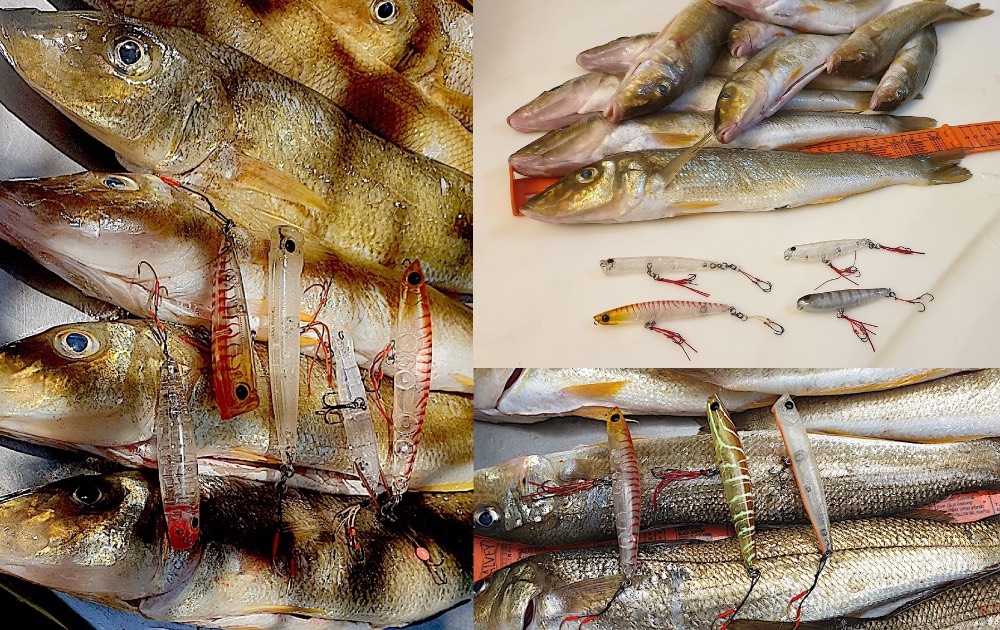
- A Variety used in these sessions.
Here is a run down of some lures types I use and some lure modifications I make .....
POPPERS
A floating lure. They have a big cupped mouth, which when retrieved makes a big splash. They are a “look at me! LOOK AT MOI !!!” noisy lure that I still find successful in choppier windy conditions. When your lure has to compete with the chop on the water to catch their attention. The fish are less visually discerning with their obscured view in these windy conditions.
These lures need to be worked, with a higher rod position and a constant retrieve to maintain a continuous bloop and splash.
I use Atomic Hardz, Shimano Bresnious Rise, Bassday Backfire, mainly.
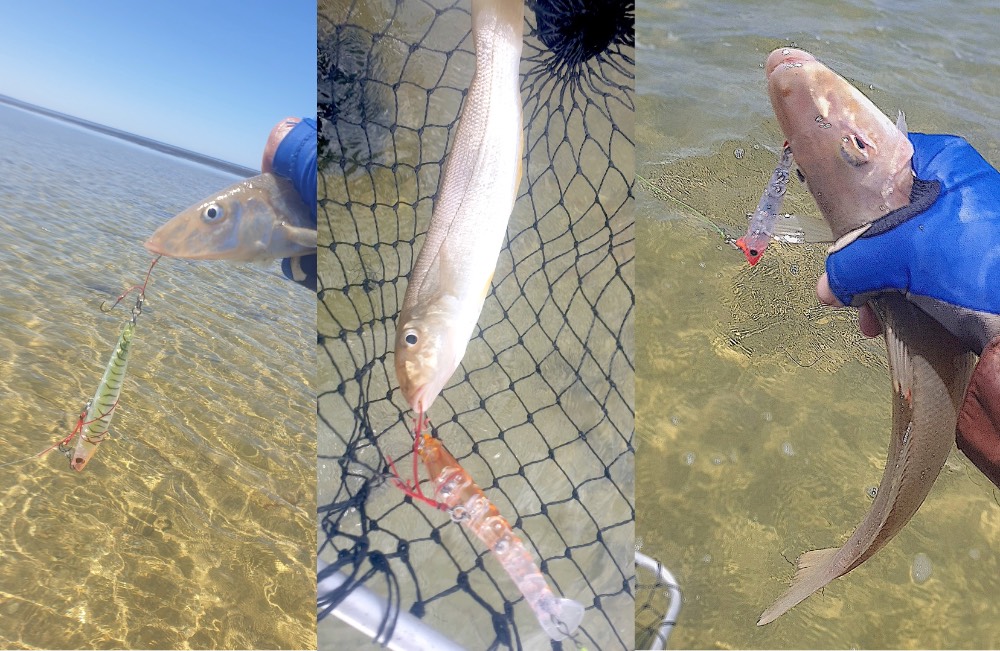
STICKBAITS
Also floating lures, known for their “Walk the Dog Action” or Zig Zag Glide actions across the surface of the water. Dependent on the vigour of your retrieve. These are my most effective lures.
There are usually in a pencil like shape. They may be a more bellied shape on some. On retrieval they move in a zig zagging fashion across the water surface.
These lures are very easy to work. Especially if you have the right ultra light, sensitive tipped, fast action rod. It’s automatic!
Some, as is the case with the Sugapen and Daiwa Slippery Dog, have a very small cup face that provides a slight forward splash.
I use Bassday Sugapen mostly, but also Zipbaits Fakie Dogs, Daiwa Slippery Dogs, occasionally Fish Candy Skinny Dog and Berkley Scum Dog. A kennel of lures !!!!
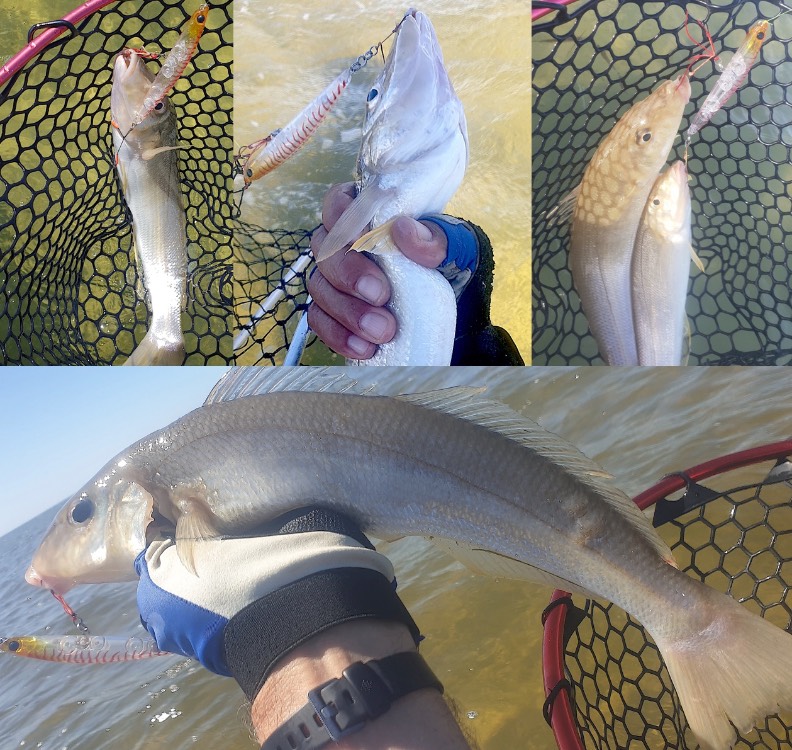
- My Favourite Stickbait Sugapen95 Col# MB16
HYBRIDS
Again floating lures. Basically the longer Stickbait pencil body with a larger cupped popper mouth. They are very versatile in variety of conditions, but never seem dominant in any situation. Due to their larger cupped face they provide enough splash to be effective in choppy conditions as well as “Walk the Dog” in calmer conditions. On their day they can work when fish are turning up their nose at the Stickbaits. Again a very easy lure to work. I use Zipbaits Skinny Pop, MMD Splash Prawn, occasionally a Berkley Pop Dog
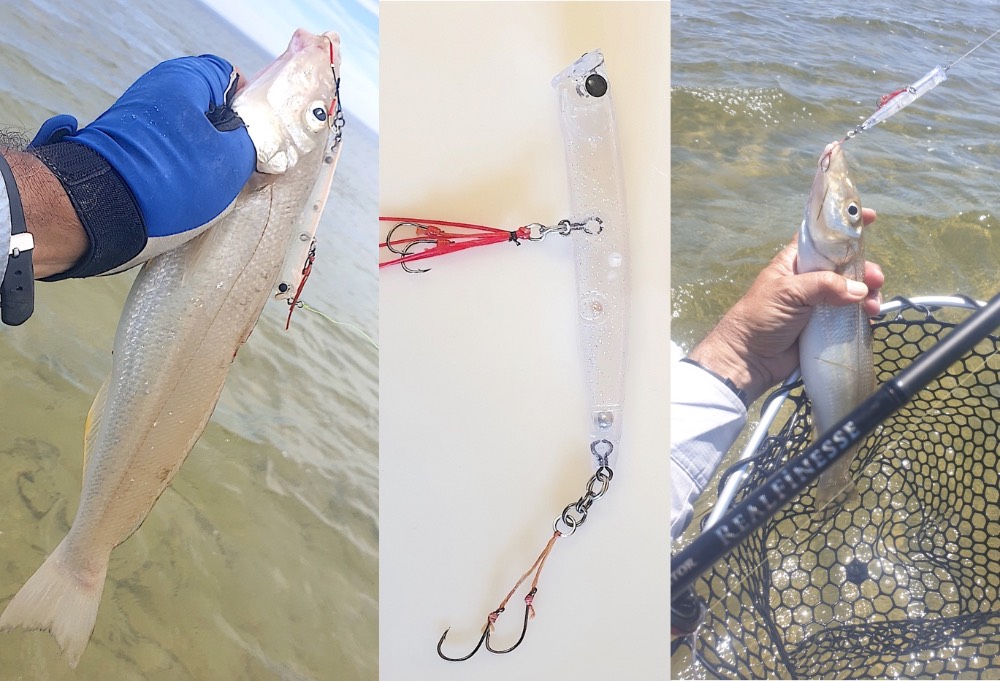
- Zipbaits Skinny Pop at work
SIZE MATTERS
As a general rule I find the bigger lures catch bigger fish. Especially in windier conditions. In very calm conditions I use smaller lures, like a Jackson Ebi Panic, Sugapen 70, or Berkley Pop Dog. I avoid calm conditions if I can help it. I much prefer the windier days with long down wind casts working over more water.
The larger Daiwa Slippery Dogs in the 97cm size, is proving to be Daiwa’s most successful YFW lure for me.
Zipbaits Skinny Pop 90 way out fish the smaller Skinny Pop Jr 70mm. Their Fakie Dog 70mm is also way better than the 50mm
I use the various sizes of the Sugapen to suit a variety of wind conditions. My favourite is the 95mm size as it suits the most frequent wind conditions in which I fish. The Sugapen70mm for glassy and light winds (0-5 knots). 95mm in moderate winds (5-15 knots). 120mm in stronger winds with heavy chop (15+ knots)
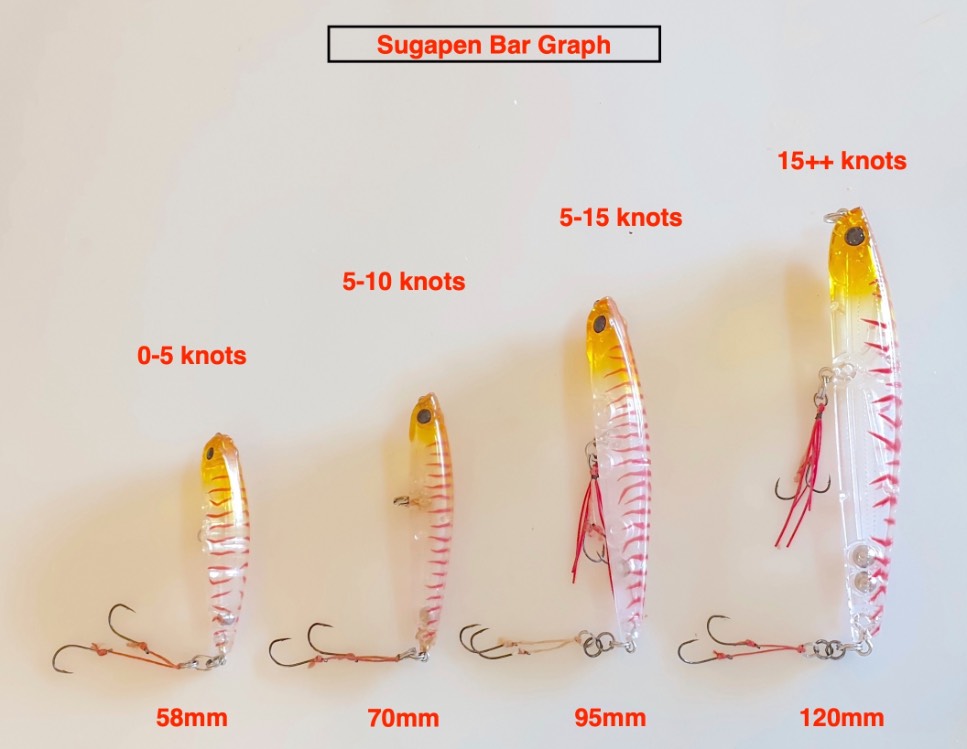
- A size range and suitable wind conditions.
BLADES and SUBSURFACE LURES
These don’t float! There are a few subsurface lures for YFW. Like StrikePro Blades, Zipbaits Zoea, but IMO none are better than the Ecogear ZX Blades. They flutter, vibrate and hop along the sand beds much in the way a Clicker or prawn would flee. They are so easy to work. Use a constant rolling retrieve. Feel the vibes of the lure. No vibes means there is some weed attached on it.
A hop or two adds excitement. A pause can often find a Flathead latching on.
They are made from metal and lead. Can cast long distances and into the wind easily. This is the lure I give to the lure fishing newbies. Their only drawback is bouncing along the bottom they can easily pick up weed. if you get a clear run they are very effective.
In deeper channels and cooler water conditions, when fish are too lethargic to come to the surface, these will see them out fish all the surface lures. Ecogear ZX, in the biggest 43mm size is my go too. TT and StrikePro blades, I have not given as much time in the water, but I have taken a couple of YFW and Flathead on them.
ASSIST HOOKS
Never use Trebles. I immediately remove all the trebles from a lure. They catch too much weed. And too many fingers as well.
The standard size trebles fitted on the lures are always an overkill for the small mouthed YFW anyway. If you want to retain the trebles you should downsize them. My favourite treble for this class of lure is the Daichi Death Trap #10.
Sharpness is a key factor for consistent hook ups. The fine gauge of the smaller assists provide penetrating needle sharpness.
On all the slightly larger lures it is possible to mount assist hooks both in the middle and on the rear.
The Ecogear ZX assist hooks, sitting in the middle of a stickbait lure I feel provides a good resemblance to a bunch of dangling prawn legs. The rubber “legs” dangling around your hooks also act as a weed guard deflecting weed off your hook. The YFW hit these middle assists with surprising frequency. I think aiming to disable their prey prior to feeding. My preferred size is the “Small” size Ecogear ZX Assist. There is now an increasing number of options available. Some of the better ones I have tried are Oceans Legacy and Shinto.
On the rear mount of the lure I most often use the Atomic Trick Bitz in size 8 attached with a few extra split rings.
There are less lures “thrown” by the fish when using assists. The flexible joint/connection with multiple split rings, does not provide the fish any leverage, to throw the hook. On Blades try a double set of assists. A combination of Trick Bitz and ZX, on blades and vibes ensure you get an inescapable, multi hook - hook up.
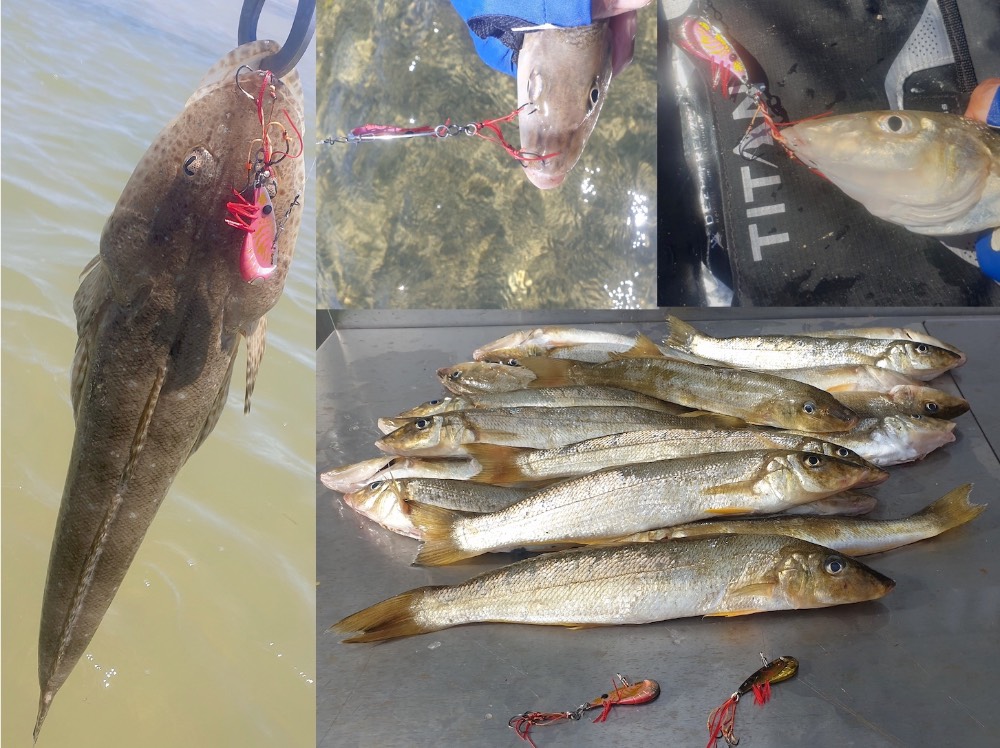
- Extra Assist hooks added to the Ecogear ZX43 blades
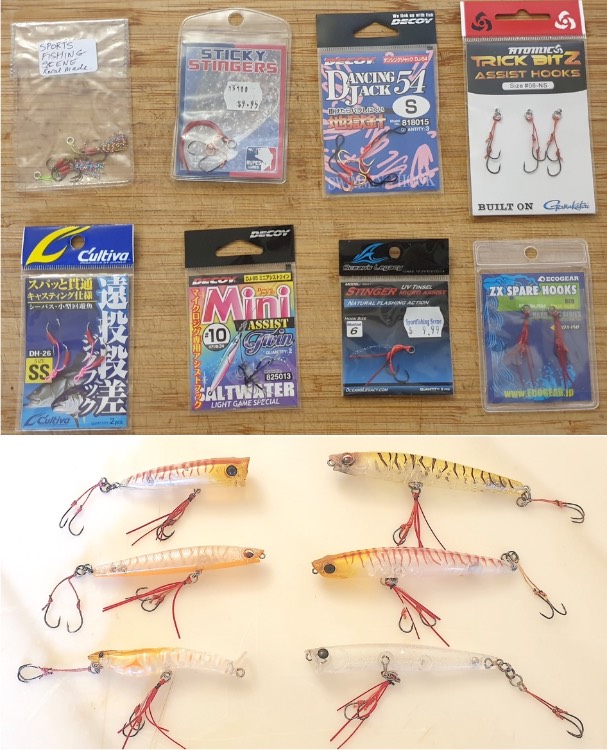
- A Few Assist hook options and placement on lures.
SPLIT RINGS
It may seem an innocuous little item of no importance, yet it has had a major impact on my catch rate.
Initially I experienced a lot of chasers, swoops, swipes, strikes and slurps at the back of the lure from YFW.
I kept a record of how many follows and strikes I had, versus the hook ups. It was a disappointing rate of hook ups.
It always felt like the hooks were frustratingly just that little bit too far away, out of reach, from the fish’s mouth.
So I used the extra split rings to allow the assist hooks to hang back a bit further and weigh down slightly lower towards the rising fish.
There was also extra swing behind the zig zagging “walk the dog” lure in a whiplashing fashion.
It has made a huge difference in my hook up rate. I use the Owner fine wire size #2 split rings.
“ It don’t mean a TING if ain’t got that swing” … Doo aah, doo aah, doo aah !!!!
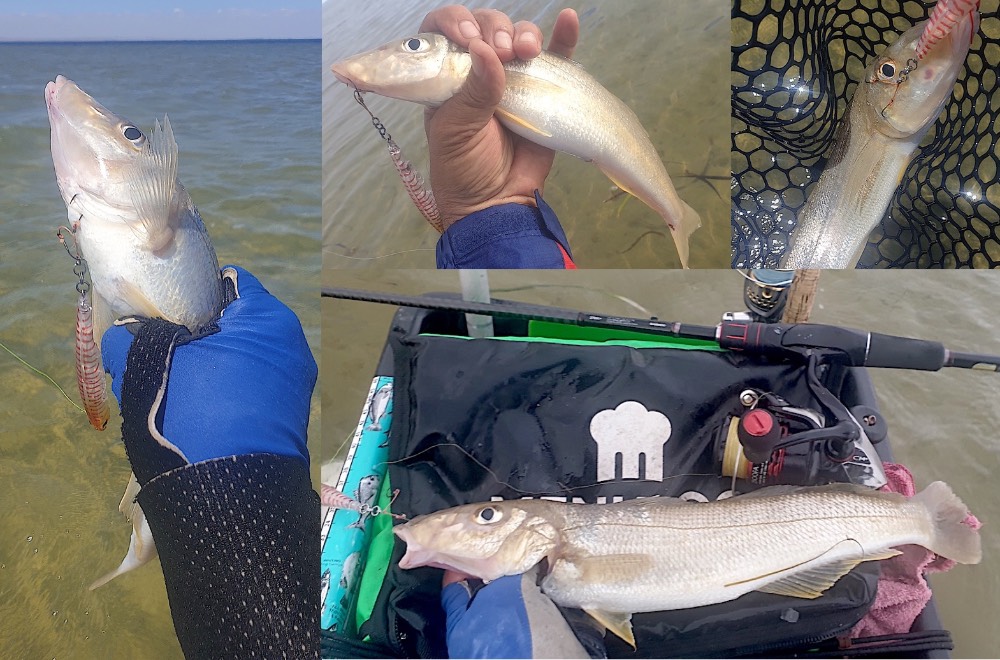
- The results of a few extra Split Rings.
WEIGHTS - Stick on
Add stick on weights to some of those smaller lures to add to their casting weight. It will give your small lures a longer cast.
On the open sand flats the longer retrieve from a longer cast will always catch you a lot more fish.
They can be used to favourably adjust the balance of the lure and how it sits in the water.
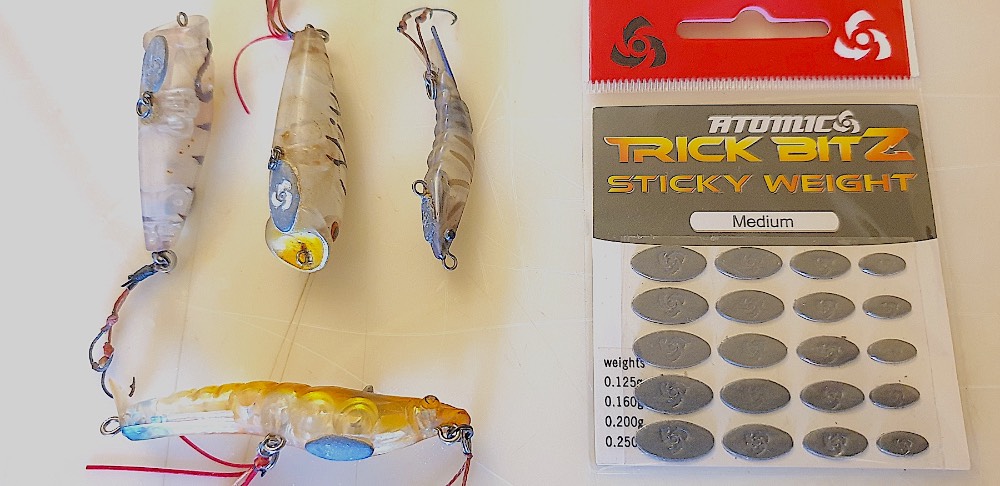
- Lures modified with weights.
PAINTS - COLOUR
I am a very poor artist. But the YFW are not discerning art critics. Don’t be afraid of adding some of your own colour to a lure. I use paint markers. Readily available in various colours and thicknesses.
You can remove it with a bit of methylated spirits and change colours at will.
It has worked for me. Bringing success with an otherwise dud lure colour.
There are lure blanks available to do your own customised paint work.
The most successful lure colours for me have a fair amount of translucency and some orange to red toning.
UV enhanced colours and materials have proved to be more successful in low light conditions.
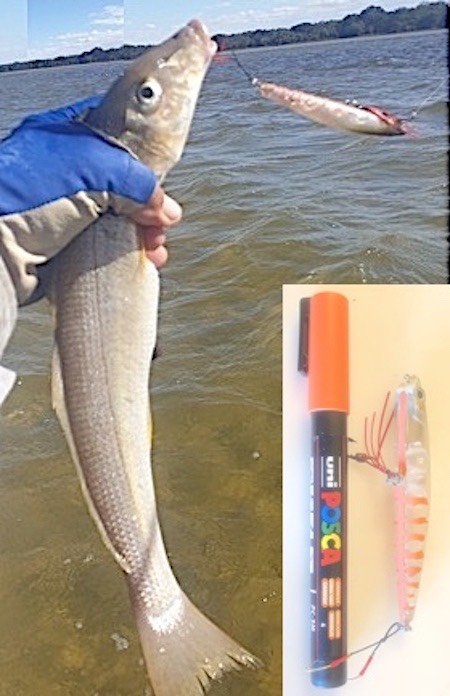
- My primitive adaption ... IT WORKED!
ADDED ATTRACTANTS
UV sprays have proved to be effective on overcast days. It has brought a quiet session to life for me.
No worries if you don’t have UV lures on you. A Spray on UV coating can convert your standard lure to a UV lure.
Scents? … I think they work? At least they have not put any fish off! I have used them without any definitive results.
It probably is more effective with a slower moving and pausing lure when Bream and Flathead fishing.
Those fish get more of a chance to have a sniff of the lure. I have noticed better results when using slow retrieved blades with added S Factor scent.
Scents have less impact with the faster, continuous moving surface lures for YFW. Yet I continue to use it now and again. No harm.
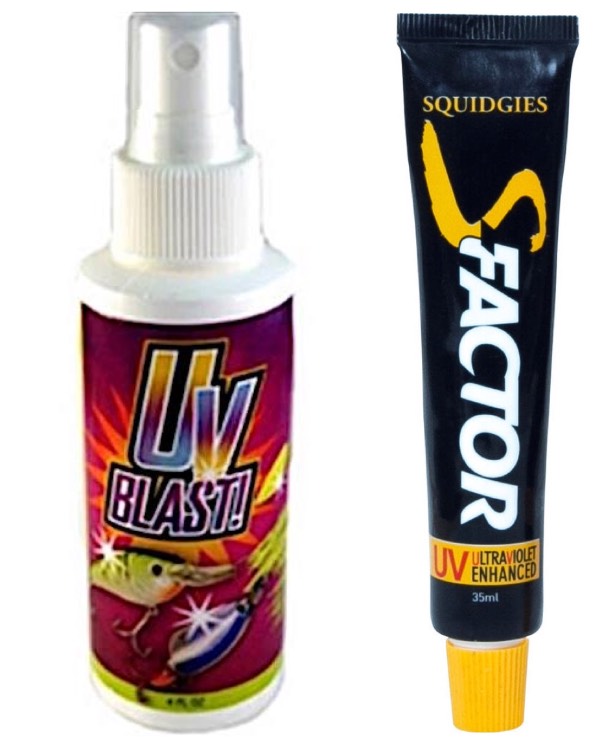
- Added Extras
LEADERS and SNAPS
Floating or sinking leader line? I think this is only a factor with the smaller floating lures.
Using bigger lures most of the time, it does not affect me as much. I use both, with no noticeable difference.
Always remove the standard connecting split ring on the nose of a lure. A Direct stiffer connection to your lure is best for the most responsive lure action that you want for YFW.
I hate wasting time in the water, repetitively tying on lures so I use a lure clip for lure changes. Over time I have used a variety of lure clips. To date, the Decoy Spiral Snap is the lightest, fastest and easiest to use. Most secure, and most responsive for lure action.
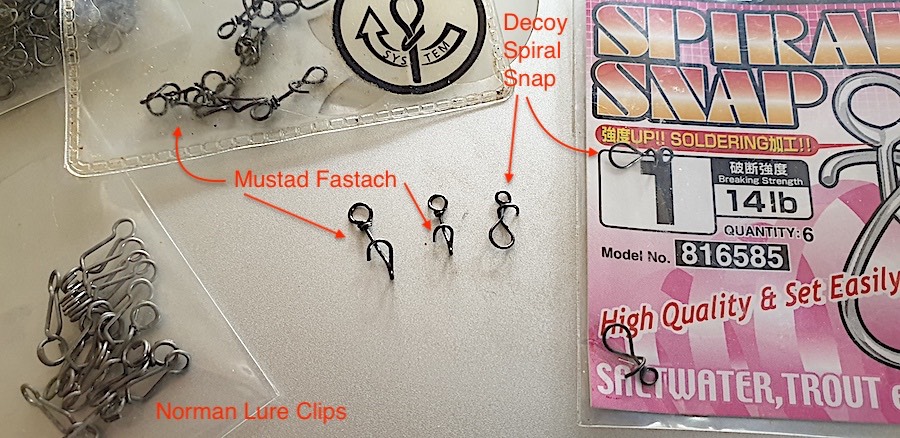
- A Few of many snaps tried. Decoy Spiral Snap works best for me.
LURE STORAGE
The reversible lure storage boxes which provide an individual storage recess for each lure is a must.
With all those dangling assist hooks any combined storage of lures end up into a fused tangled mass.
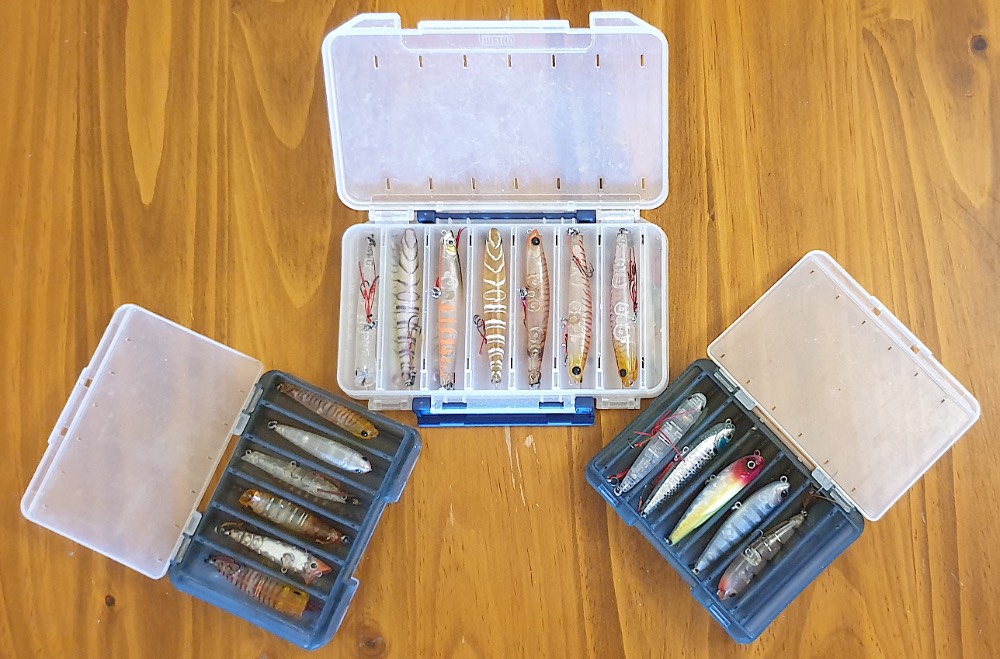
- Double sided lure boxes for a session ... Too many choices !
TOOLS
All this fiddly lure tinkering is going to drive you mad or blind, if you don’t have the right tools.
The best split ring pliers are the ones with the skinniest, pointiest nose on them. You will need to poke them into some very small split rings.
Along side that a standard type narrow long nose pliers for holding those tiny rings. Think … jewellery workshop tools.
The Mustad long nose, split ring pliers have served me well. And should it really get fiddly out come the Pincet/Tweezers for micro split rings. These days there are a few options for micro split ring tools by Daiwa, Halco and Samaki as well.
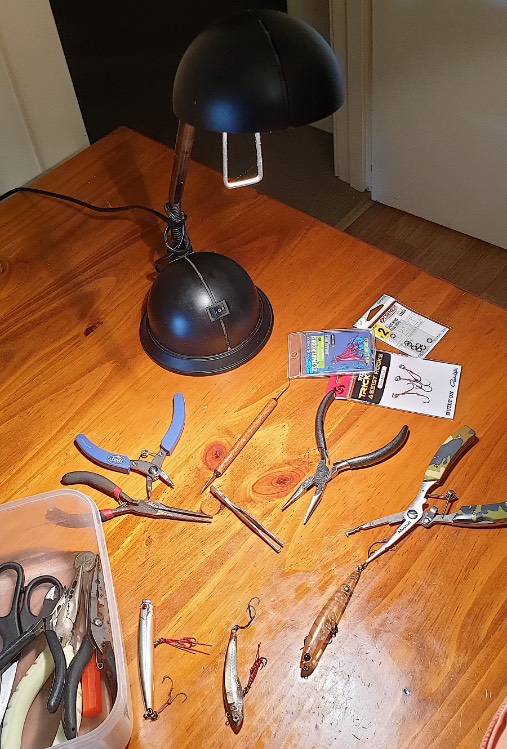
- The obsession out of the water !
Hope this is helpful in fast tracking you towards the pleasures of lure fishing YFW
Tight Lines!
Cheers, Des
- Territory Lad, Crowky, yellow door 1 and 6 others
-
 6
6
-
 3
3
-
@Soobz I have only been using lures for YFW for the last 5 years. So I can't make the 10 year comparison.
However I know the impact of the increased professional catch, having fished YFW with bait for 19 years.
It is clear the YFW stocks are in great decline due to increased professional fishing pressure. I have fished a variety of areas, they are all in decline.
On the lure front, I have been on an obsessive 5 year learning curve.
We need to be aware that fish do learn. And the same lures used repetitively in the same area will have diminishing returns.
I will put up another post on lures.
Meanwhile have a read here: https://activeanglingnz.com/2015/09/17/do-fish-learn-to-avoid-baits-lures/
Cheers, Des
-
JOIN A FOOD CHAIN
No, No! … Don’t get a job at “Maccas” … but find the Yellow Fin Whiting’s favourite “Maccas” ! Their food chain.
Recently I have been getting consistent results when targeting Large Yellow Fin Whiting.
It was after I studied the YFW diet, by regularly inspecting the gut contents of fish caught in different locations. Developing an understanding of their food preferences, movements, behaviour and the habitat in each location. Subsequently I have been fishing these habitats with the food preferences for that location. Fish in their “Macca’s” !
Large YFW’s Morphology and Diet
Larger YFW are built differently, behave differently and feed differently, to their smaller mates.
The morphology of the bigger YFW enable them to predate on a number of alternative food sources.
Bigger means stronger, faster, and most importantly they have a bigger mouth to swallow their prey.
Prey that is much, much larger than the worms they were weaned on. Not that they will pass up an available worm!
The bigger YFW are aggressive predators. No longer the docile benthic grazer of worms, nippers and cockles, that it was when it was smaller. They can now chase down prey. They can grasp it, rip it, immobilise it, and swallow it whole.
The different sizes/ages of YFW practice what biologist refer to as Resource (food) partitioning.
Which means the big ones don’t steal the young one’s food. They don’t all compete for the same food resources.
Larger YFW move on to aggressively feed on a lot of Crabs, Prawns, and Minnows.
Regularly inspecting and recording their gut contents and the areas they were caught in, provides a great insight into their diets.
And a good indication of the likely habitats in which to find the larger YFW. And more importantly what lures to use where.
There is also a degree of “Habitat partioning” with the YFW.
In summer I find, a lot more of the larger YFW remain in the upper gulfs. It holds their preferred food.
Whilst most of the smaller ones move on to southern gulf areas that hold more worms and small cockles.
The Habitats & Food Chain
Through out the upper regions of the two gulfs, the samphire beds are the start of a series of very productive areas to find large YFW
Haswell’s Mud Crab (Helograpsus haswellianus) are abundant here. They feed on the film of diatoms and algal slime which coats the surface of the mud flats. Through the warmer months the crabs spawn. Their abundant zoea are then fed on by the juvenile Prawns.
In that warmer half of the year, Juvenile prawns thrive in the, food rich, high salinity and higher water temperatures of the upper gulfs . Post-larval and juvenile prawns settle into the shallow environments of the upper gulfs for the warmer months. Before eventually moving on to deeper waters as they mature. The juvenile Prawn and Haswell’s Crab populations are the primary reason why the upper gulfs hold more large YFW.
So often I find the large YFW with their stomachs bursting full of small mud crabs, along with juvenile prawns.
And these YFW are often taken in low water in the outgoing tide. On the higher tides, the Prawns will move in to feed on the crab spawn and larvae. The big YFW are not far behind, hunting down prawns. But they also hang back in the very shallow water of the littoral zone, as the tide drops. Waiting for the small mud crabs to emerge from their mud holes, that are under and around the samphire beds. Then the YFW feast. The big YFW are unbelievably aggressive in the shallow out flowing water, during these frenzied feeding periods. Water flowing out, off the Samphire beds, often through mangrove creeks, will hold large YFW that have spent the high tide feasting on prawns and crabs.
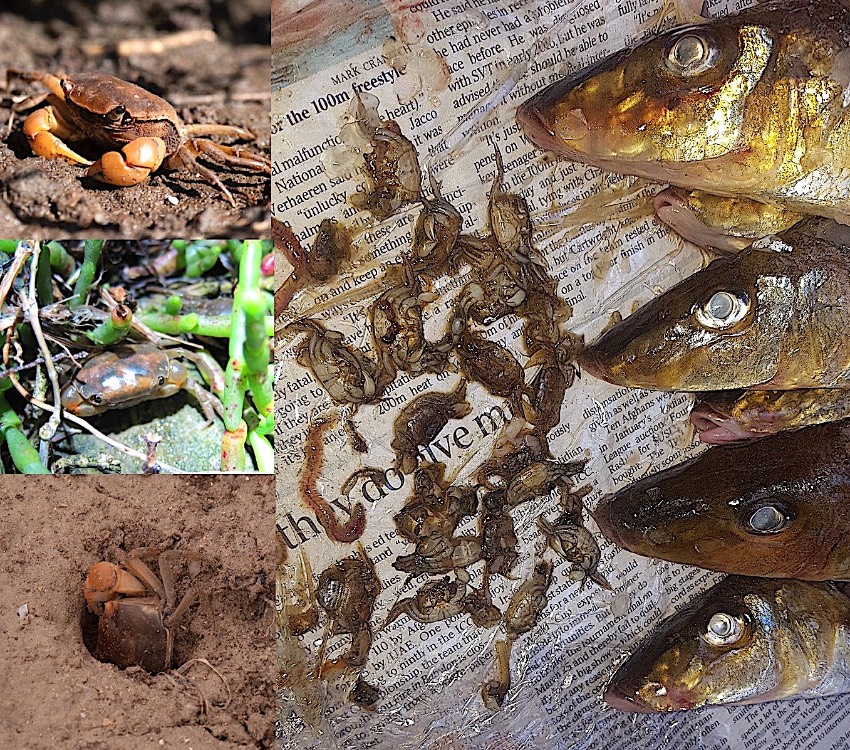
- Haswells Crabs in the YFW guts
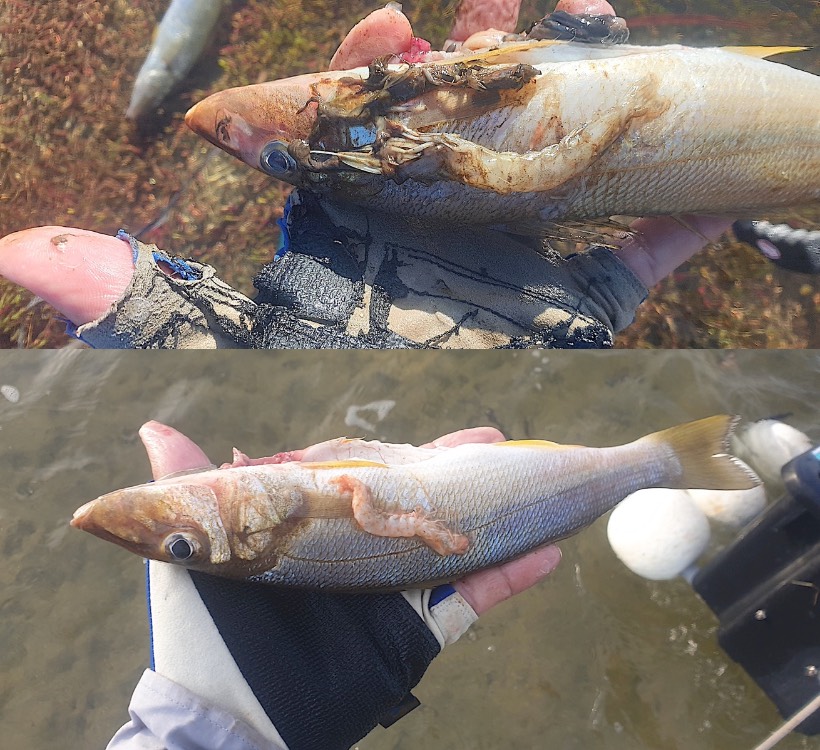
- Prawns upto 100mm found in YFW guts.
I have managed a couple of YFW with the Cranka Crab. But no luck using the soft plastic crabs. But the stand out success in this area, has to be the stickbait surface lures that mimics the movement of fleeing prawns in this habitat. Sugapen 95 is the most successful for me.
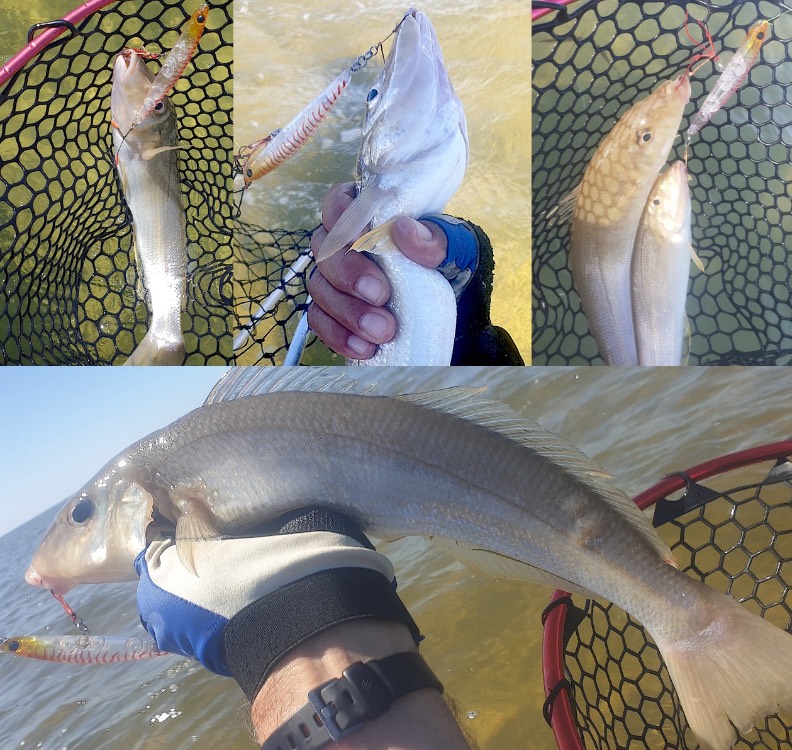
- A few YFW taken on Sugapen 95 Col# MB16
The next promising area, are the sandflats. Which lie adjacent to the mangroves and samphire beds. The organic rich tidal flows, coming off the samphire beds provides the food source for many detritivores living in the sand flats. Large YFW particularly love lingering over the sand flats that hold Clickers. The smaller tides when water covers the area for a longer period, is a particularly good time to find them feeding here. Big YFW love big Clickers. The Ecogear ZX 43, a sub surface lure, on retrieval, has an action that mimics the movement of a fleeing Clicker or prawn, across the sandy bottom. It is irresistible to a large YFW when presented in these sand flat areas. Again SP imitations of clickers have had disappointing results for me.
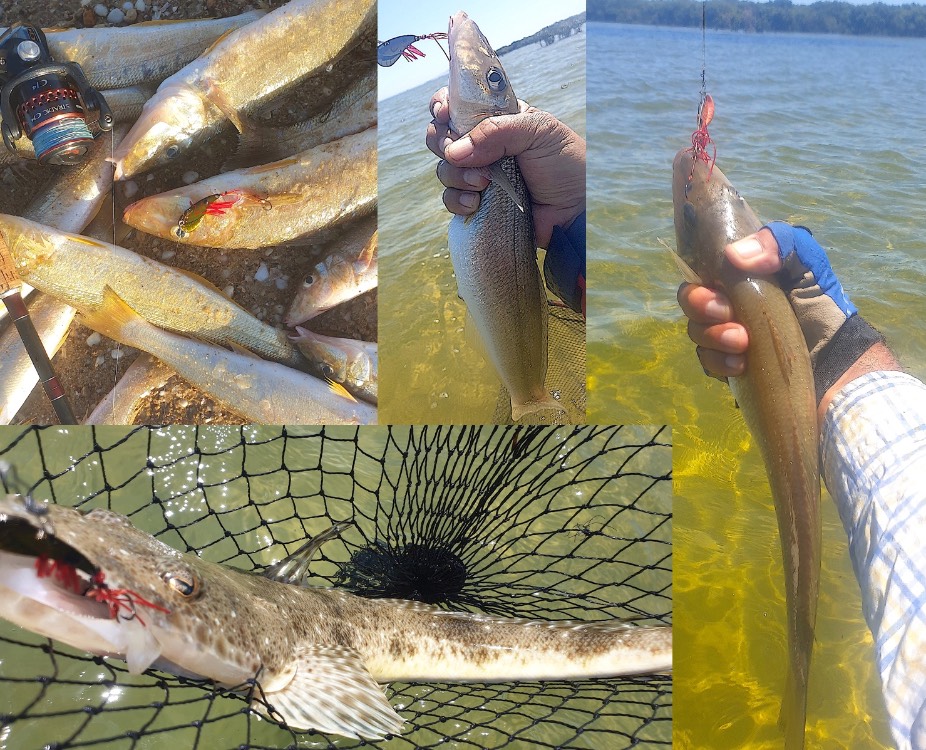
- A few YFW taken on the Ecogear ZX43 Col#402 (UV)
The sand flats finally meet the weed line. The ribbon weed beds hold and offer protection for a number of the YFW prey. Prawns will retreat with the tide and shelter in the weed beds. Likewise, it provides a safe haven for Minnows that shelter from predators here. Along with Flathead laying in ambush, big YFW are always patrolling the weed line looking for prey, should they stray out of their shelter. The Stick-bait surface lures, worked along the surface areas of the weed line, provides the top water action here.
And Soft plastic Minnows worked along the bottom of the sand flats - weed line edges, will also find you catching the larger YFW along with a few big Flathead.
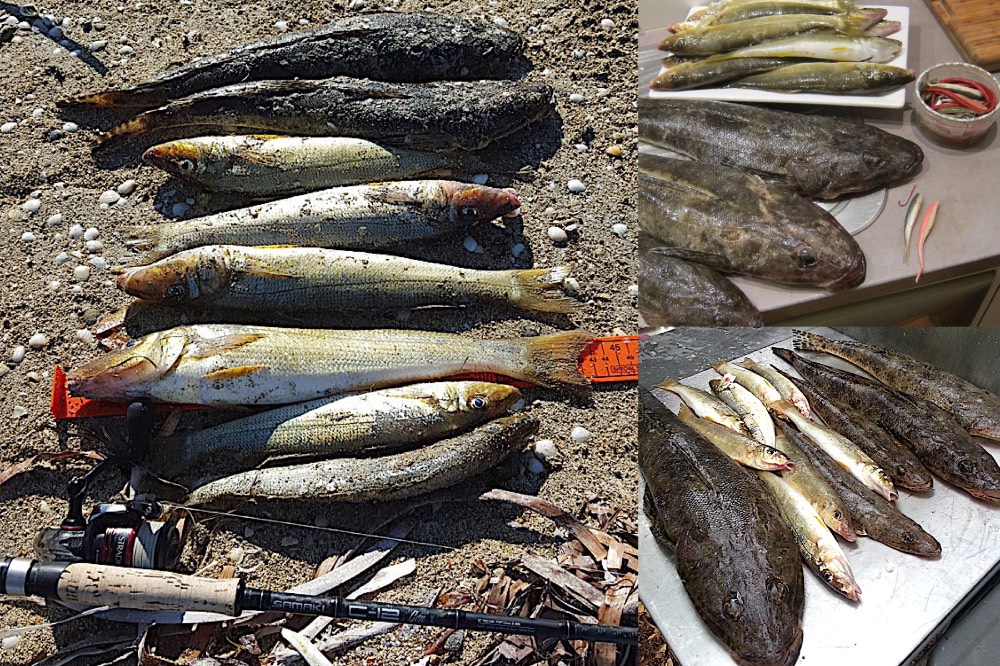
- A Few YFW along with some Flathead taken on Gulp Soft Plastic Minnows and Shads
To find big YFW, find the habitat that holds their preferred food.
To catch Big YFW on lures, use the lures that imitate their preferred food.
“Match the Hatch” and Increase your catch!
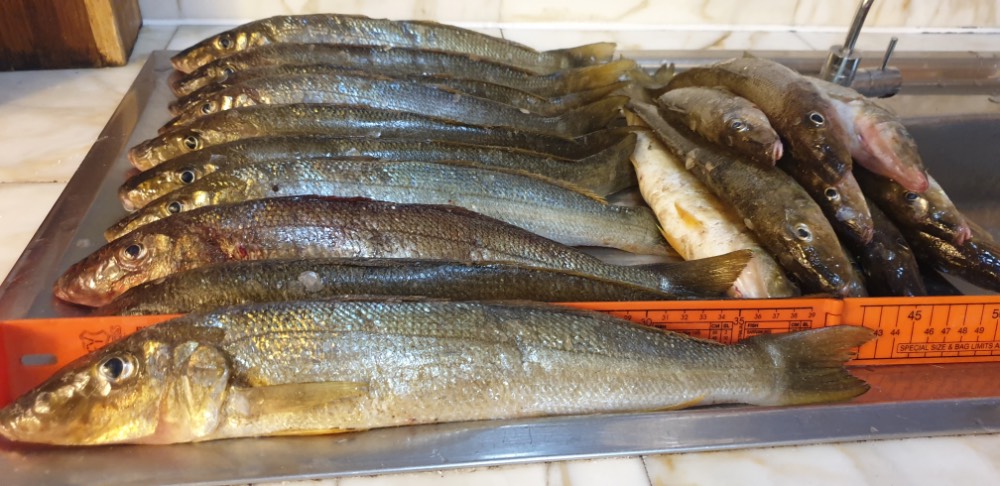
- When you crack the Food Chain, catches of 10 or more 40cm plus YFW are a regular possibility in your bag.
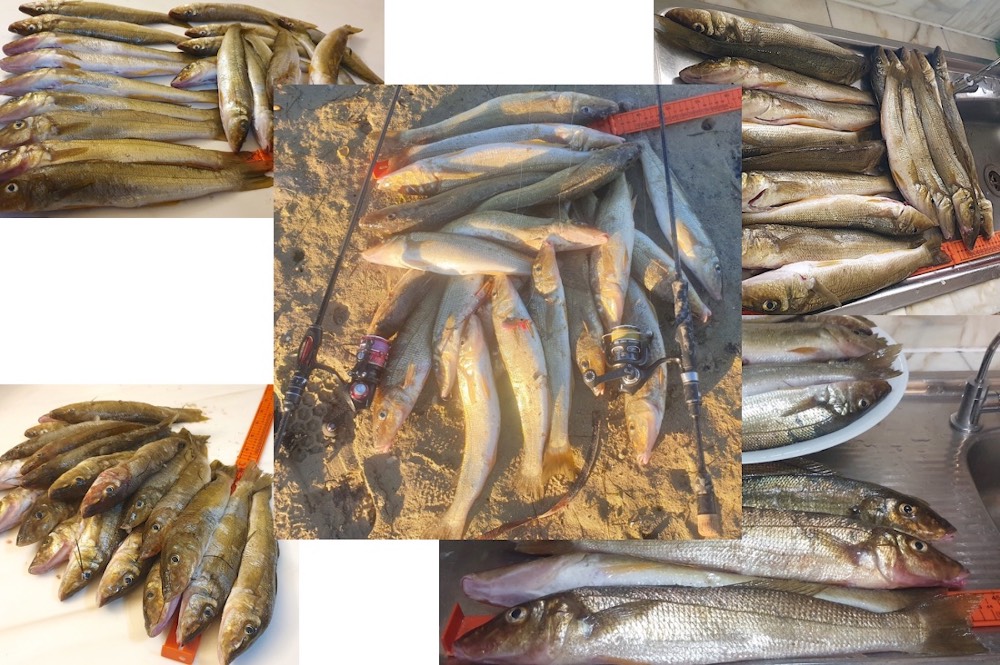
- A Few sessions with 7 to 10 40cm Plus YFW in the bag
Tight Lines!
Cheers, Des
-
-
Wind Knots
in Line
1 hour ago, SurfcaztR said:Surprising to read so many think swivels will undo twisted braided line no matter what size or brand of swivel is used it won't work.Yes on Mono or Fluorocarbon line but not on braid.
I was aware that braid would not have the "torque" ( unsure of term) to untwist itself.
Nonetheless, I placed 3 x size 12 swivels in a row above a 30 gm swivel sinker. Then unwound and rewound the spool around 4 times.
This was the difference from my previous un winding attempt ... Also the new thin shim !!!
Hard to accurately identify what exactly did the trick. But it worked.
I see no harm in covering all bases.
- yellow door 1 and doobie
-
 2
2
-
Yellow Fin Whiting Lure Fishing Gear
I am frequently asked to recommend YFW Lure fishing gear.
It lead me to summarise my thoughts on what I consider to be the most important factors in your gear selection for this particular pursuit.
My suggestions are in a prioritised list. Starting with what I consider to be the most important bit of gear to the least important based on how I feel it will impact on your success with YFW lure fishing. I am sure my opinions will raise a healthy debate!
So what are your thoughts on the perfect set up and the most important factor?
1) ROD
Absolutely the most important item in this game. This should be your biggest investment.
A 7’6” rod is ideal. It can cast small lures long distances easily. Cast distance is the most important factor in successfully catching YFW on lures consistently. A long cast goes way out there amongst unsuspecting fish! It provides a long retrieve, covers more water and gives the fish the most time to be attracted to your lure. So get a rod that can cast small lures far.
The latest materials and construction methods of the better quality ultra light rods, facilitate the storage and recoil of elastic energy, which imparts lure action almost naturally. The tip sensitivity of ultra light rods, brings a lure to life and seriously makes a lure dance with little effort. A very sensitive top section is also well matched with a powerful bottom end.
The extra length of a 7’6” rod has very good shock absorption for the hard runs that big YFW have when they are in close. You will definitely pull less of those small assist lure hooks from these trophy fish.
I have found the Abu Garcia Eradicator Real Finesse Rod the best I have used to date. Model# ERFS-76LT-TZ 7' 6" Rod. Rated for 0.6 - 3 lb Line Lure weight 0.1gm-12gm The whole rod weighs just 66 grams.
The Samaki Zing Xtreme V2 762SSTXL is a close second. Rated for line 1-3kg with a Lure rating of 1 to 7gm.
The Shimano Zodias ultra light is great for those who prefer a shorter 7ft rod.
The Shimano T Curve Premium 21TCP782LC … 7" 8" 1-4 Kg line, 1-7gm lure. 2 pc It is a little more powerful, which I use with the heavier lures.
There are a lot of good ultra light options today in the 7' 2" to 7’ 6” range, rated for 1-4 Kg line, 1-10gm. At prices to suit those just starting out. But you will soon get the feel and desire for the subtle finesse improvements in the more expensive models.
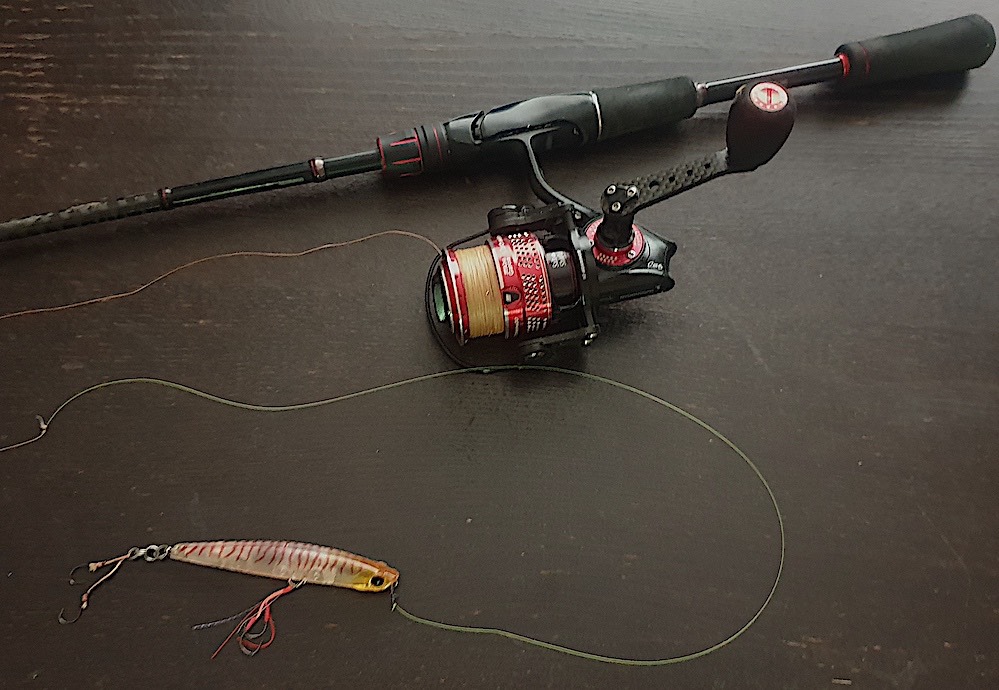
2) LURES & HOOKS
There are lures that have a long proven record for consistently catching YFW. This is fundamentally due to their good design. They do not really need to be “worked” so much. On retrieval their natural action, imparted by a good rod, does most of the work for you … naturally.
Bigger lures catch bigger fish I find. They also cast a lot further out to unsuspecting fish and work over more water, increasing your chances of a strike.
Colours … nearly always Clear with some Orange. Other colours have a fast diminishing success rate and are very rarely more successful. Lures with UV colours are a bit better in low light conditions.
The Sugapen 95 in Colour MB16 is by far the standout lure in all conditions for me. The Daiwa Slippery Dog 80 is a distant second. These Stick bait lures work better than poppers except may be on the windier days. Then I find the Shimano Brenious Rise, MMD Splash Prawn, or the Atomic Hardz, Poppers to be good.
Blades and Vibes in prawn imitations can catch as many fish on their day. But you loose the visual pleasures of the chase and a surface strike. The Ecogear ZX ranges are by far the most successful blades.
I never use treble hooks on the lures. They catch too much weed. My lures are all retrofitted with Atomic Trick Bitz size 8 or the Ecogear ZX Assist Hooks. They catch less weed and hook up well. A more detailed post on lures later.
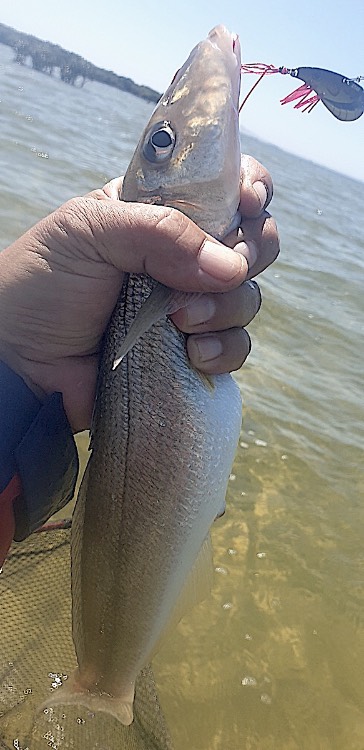
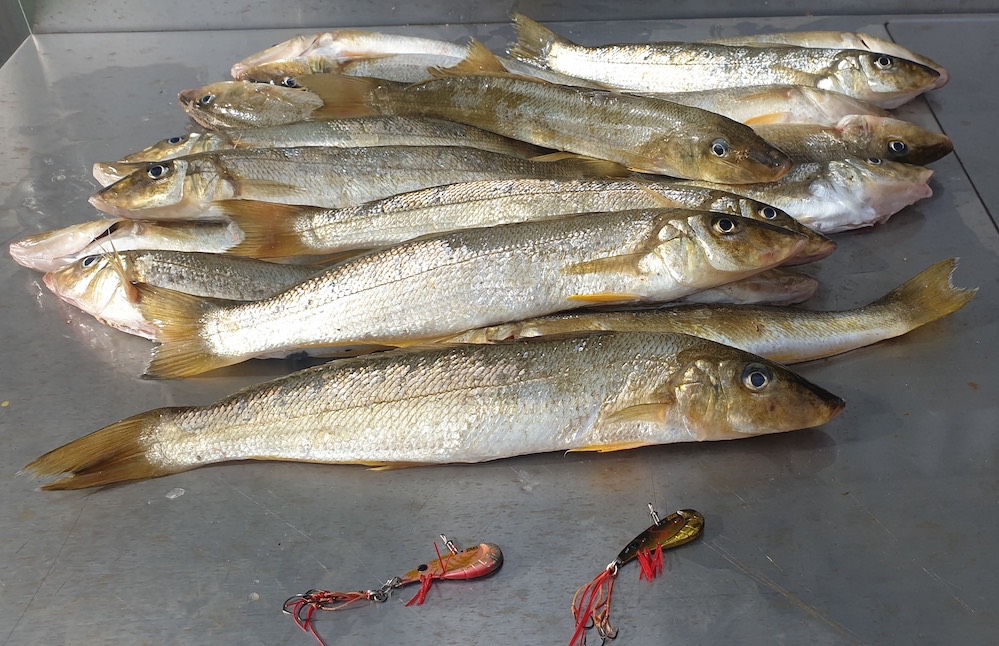
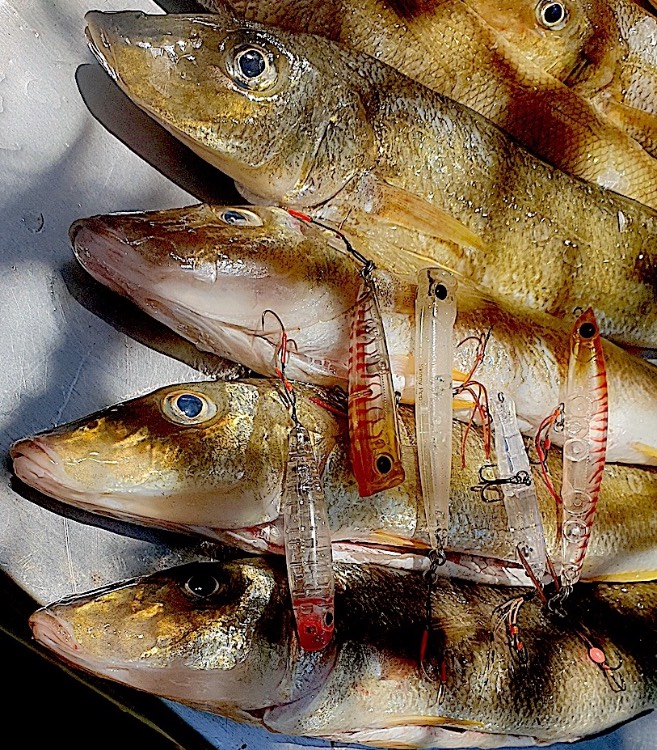
3) LINE & LEADER
A small diameter braid is best. Braid assists in imparting more natural action and provides a better feel of your lure’s movements. I find Sunline Siglon PEx8 10 lb Braid is good. I have since moved to Sunline Siglon PEx8 ADV. I have heard some great reports for J Braid, but I am yet to try it. Again it is about getting a bit more distance in your casts. Thin lines have less drag through the air and cast further. There is little risk of abrasion on the open sand flats.
I use a variety of leaders, both mono and fluorocarbon, as this I find is not as big an issue as some make out. Especially when using the larger floating lures whose action is less affected by the leader. Again back to the rod, a quality 7’ 6” ultra light rod with a sensitive upper section, has great shock absorption. So you do not need a lot of leader for stretch and shock absorption. Around 18” in length I find good. I also use a Decoy Spiral Snap for quick lure changes so I don’t use up leader length in retying lures.
4) REEL
Reels are often overrated in terms of their importance here I feel. Correct weight balance with your rod, a smooth sensitive drag and a smooth retrieval action would be the main functional demands. A wider or a long stroke spool provides a longer cast.
With repetitive lure casting over long sessions, I you will appreciate a lightweight reel. A gear ratio of around 6:1 in a 2500 size reel suits the ideal lure retrieval speed. Given the harsh treatment these reels experience whilst wading for YFW, salt water resilience is important. Shimano Stradic CI4+, Shimano Vanford and Abu Garcia’s Revo MGXtreme, have all worked well for me. Should you have strong arms, strong wrists and a smaller budget, there are plenty of inexpensive heavier reel options that won’t reduce your chances of catching a fish on lures.
5) WADING TUB or BAG
Essential for carrying all your food, drink and tackle out there for a long day. Thanks to spotting @Territory Lad I added a "triple Axle" to mine.
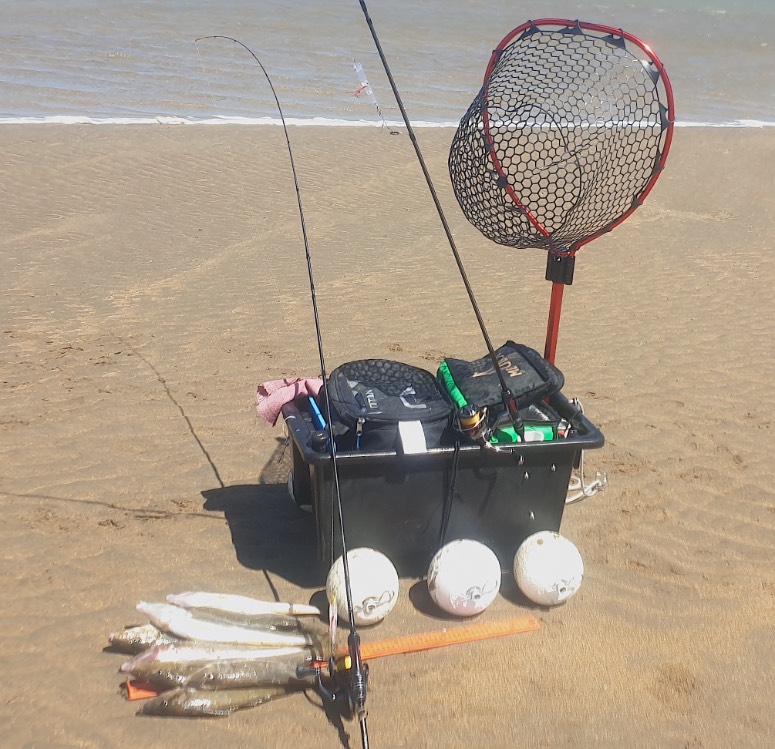
6) TECHNIQUE … aka … Pretentiousness
Mostly a lot of garbage by people posturing as super skilled experts and making a simple task appear complicated.
If you start with the right equipment it is simple and close to an automatic process. It is usually people with a substandard rod, heavy line, and inappropriate lures, that have to work so hard to achieve the right lure action. A good lure with a modern day ultra light rod almost provides the right lure action automatically. It is so easy to “work” a lure. You really don’t have to try! The only thing you could play with is your rod height position and your retrieve speed.
I hope this helps in unravelling the not that mysterious art of YFW lure fishing.
Cheers, Des.
- Meppstas, yellow door 1, Wert and 4 others
-
 7
7
-
Wind Knots
in Line
I finally got my issues sorted today.
It took some unspooling and re spooling in the park. ( and a tangled Labradoodle
 )
)
I did replace the only shim in the reel, with the skinniest version I had.
I also used several small swivels above the weight to ensure I removed any line twist when winding back on.
I had a suspicion the store machine may have put in a bit of line twist, As they initially did not put enough backing on. So they unwound and rewound the new line. That may have contributed to the problem. However rewinding the spool several times with extra swivels seems to have ensured it was removed.
Casting trouble free for now.

- yellow door 1, Yorky, Softy and 1 other
-
 4
4
-
-
Wind Knots
in Line
I have had a 2 year trouble free run with the Siglon PEx8 braid on the Abu Garcia Revo MGXtreme.
Recently I had the reel serviced and the same braid line replaced.
From the very first cast something had changed.
I have been to the park unwound and rewound the line under constant pressure only to find the same problem.
Apart from the shape of the lay, the line is winding on erratically with loose sections in the wrap.
My next step is to add a shim/washer or two and go back to the park to unwind and rewind.
The only thing I can think of is that during the service a shim was taken off and lost resulting in the change in wind and line lay.
Will keep you posted.
Cheers Des
-
With the seasons changing and the YFW on the move, I thought I would start with this one.
SEASONAL MOVEMENTS OF YELLOW FIN WHITING IN S.A.
I have been fishing, mainly as a wading fisherman targeting YFW, for the past 18 years.
Over that time I have logged details of most of my fishing sessions on excel spreadsheets.
Recorded my various observations and analysed the data.
This is a summary of my thoughts on the seasonal movements of Yellow Fin Whiting in S.A.
The arrival of YFW on suburban beaches in the warmer months and their disappearance over cooler months is a regular event.
So where do the YFW come from?
And where do they go to?
It is a total fallacy that YFW are a Summer only species and that it is only in warmer temperatures that it is taken by the land based angler. Yellowfin whiting inhabit relatively shallow waters for their entire life. I catch them all year round, in all temperature ranges, wading in shallow water. Although their location and their behaviour does change with the seasons. So too must the fishing methods used and the areas fished.
INDEPENDENT GULF POPULATIONS
The YFW populations in each gulf are likely to be independent of each other. They most likely do not move out of the two SA Gulfs in which they reside. This has been suggested by some limited tagging studies to date. They are possibly similar to the Blue Swimmer Crabs where DNA testing has shown that there are independent populations in each Gulf that do not intermingle. Currently there is a study of YFW being undertaken in this area. To date the last published report from the Fisheries Research and Development Corporation in 2020 https://fish.gov.au/report/341-Yellowfin-Whiting-2020 suggests 2 separate gulf populations. So it is most likely the YFW population’s movements are only, within the gulf in which it resides. I have noticed morphological differences between the 2 populations in the 2 Gulfs. Spencers Gulf fish tend to be slightly shorter but heavier built than the often longer fish in the St Vincent Gulf. And recently as a lure fisherman, I notice Spencers Gulf YFW are harder to catch on lures.
A study of data from the commercial fishermen’s catches of YFW, provides the clue to their movements within each Gulf.
Source: The South Australian Marine Scalefish Fishery Stock Status Report – 2011/12
WHERE do they catch most of their fish? ( Fig.1)
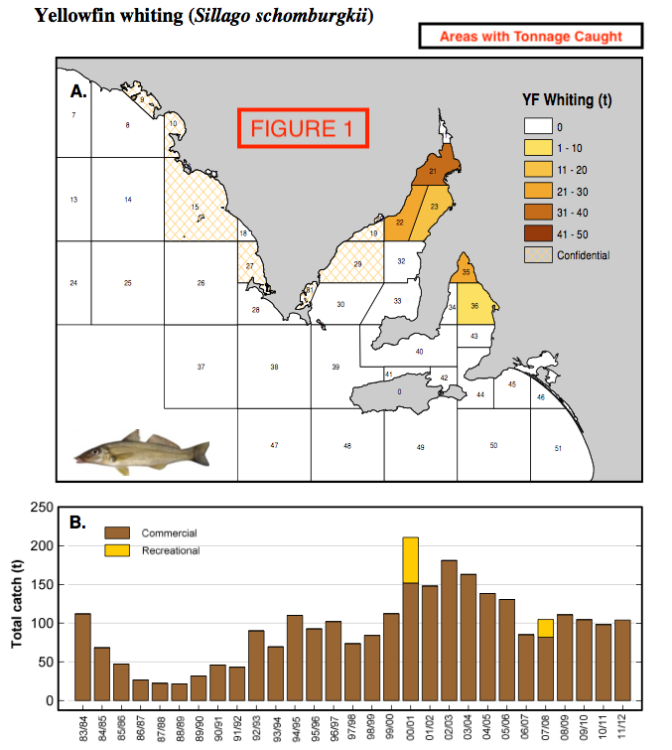
See the map of the areas where the Commercial Tonnage is caught. The majority of the commercial catch is taken in the northern ends of the 2 gulfs.
WHEN do they catch most of their fish? (Fig.2)
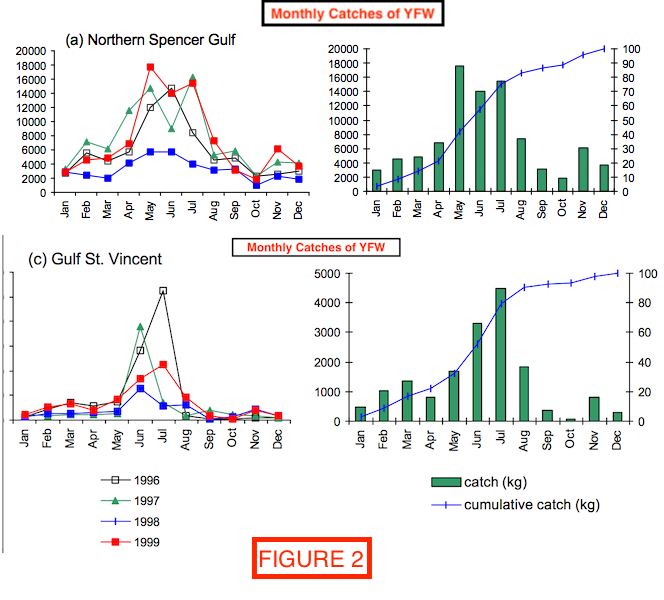
We see in the graphs for the Monthly catches of YFW, that the majority of the commercial catch is taken in the colder Winter months of May, June, July, August.
What are the Water Temperatures for those areas at those times? (Fig.3)
Source: http://oceancurrent.imos.org.au/SAgulfs/latest.html
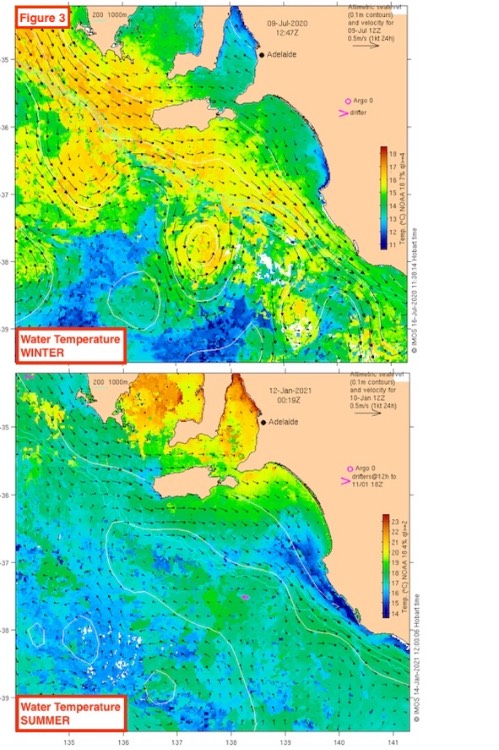
We can correlate the professional catch months and their catch areas with maps for the gulf water temperatures.
Most of the YFW catch by professional fishermen, are caught in the Northern coldest parts of the Gulfs in Winter.
And the commercial catches drop when the YFW population disperse into the cooler Southern Gulf areas during the summer months.
The movement of YFW in the gulfs is driven by the availability of food.
It is also driven by a Poikilothermic animal using colder water temperatures to reduce their metabolism and their food needs.
As waters cool in the lower gulf in Autumn, their food sources in that area becomes scarce. Ever notice how bungum worms are rarely seen in winter. They along with other benthic dwelling organisms, worms, clickers, and small cockles, tend to move deeper in the sand. Are less accessible and remain dormant in the cooler months. The food that was available when the water was warmer, has disappeared from these southern areas of the Gulfs.
The most consistent and reliable food source over winter is in the northern gulfs. The food source here is primarily bloodworms. They are plentiful in the organic rich flats adjacent the mangrove areas of the northern gulf. Also abundant are the seaweed worms residing below the large dead seaweed deposits, that occur in the northern gulf over winter. The seaweed worms become more accessible at this time of the year, as big night tides and winter storm surges, dislodge seaweed banks and their seaweed worm populations. Bloodworms are readily available right throughout the winter period. Bloodworms are actually most active in winter. Constantly moving and relocating all through winter using the larger winter night tides to do this. Not just during their major spawning runs, when they are very visible on the surface in large numbers. Hence they become a consistent food source for the YFW in winter. Taste a winter caught YFW and you can often taste the distinctive iodine flavour that comes from a diet primarily made up of bloodworms.
The other main reason for the YFW to withdraw to the colder waters of the Northern Gulfs, is to intentionally enter a state of Torpor. Being Poikilothermic animals they get their body temperature from the surrounding water. Torpor is a state of decreased physiological activity in an animal, usually by a reduced body temperature and metabolic rate. Torpor enables animals to survive periods of reduced food availability. The Northern Gulfs are the winter “Bear Caves” for the YFW.
However, they still need to feed. Just not as much. And certainly not as vigorously as they do in summer. This makes winter fishing for them more location and conditions specific for a land based fisher. In particular during a cold winter, they will be heavily concentrated in the deeper warmer parts of the cold northern gulfs. Whilst they are seeking cooler waters to slow their metabolism, they still avoid extreme low temperatures. They will often be out of reach of the land based recreational fisher. I have talked with professional fishermen at Pt Parham and Pt. Wakefield. Their most productive catch days are after a few very cold frosty mornings. When the shallow water is the coldest. This is when the YFW retreat from the icy shallow waters and are in concentrated schools in the deeper warmer pockets of water. This aggregation makes them easy targets for the professional’s nets. Hence as the Figures 1 & 2 show, the majority of the professional catch is taken in winter in the northern ends of the gulfs. If you are wading these areas in winter you can see and hear the professionals banging their boats, rounding up the fish into tighter schools prior to netting them.
There are land based spots that are connected to deep water where you can burley in some YFW in winter. This is the only time I ever consider using burley for YFW. Other times of the year you attract too many nuisance fish rather than YFW. In winter other than Salmon trout, there are less nuisance fish about. However with a lower metabolic rate, the YFW are very lethargic in winter. Being a poikilothermic animal they wind up in a state of torpor when water temps fall below 12c. Their bites are timid. Often just sucking baits. Along with burley, smaller hook sizes and the lightest gear is more effective. I normally use a Size 4 hook but drop down to a size 6 even 8, in these months. Keep weights to a minimum. Often it is only on the bigger incoming night tides that you will find them. That is when the deeper warmer water is lifted up and onto the beach, bringing with it the fish it holds. The bloodworm runs in winter are certainly a good time for the wading fisherman to catch a few YFW. They are stimulated into feeding more. My fishing logs show, it is an exceptional winter YFW season when the water temperatures are over 13C during the bloodworm run.
There is a population of YFW that remains down south in the Onkaparinga River estuary over winter. This again is due to the fact that bloodworms inhabit that waterway. I know of fishermen that regularly catch bags of YFW in the Onkaparinga Estuary in winter. Using frozen bloodworms for bait. Little wonder that the most common early season sighting of YFW on the suburban beach areas is around the mouth of the Onkaparinga river. There are similar enclosed water bodies, such as Franklin Harbour, in the Spencers Gulf that consistently hold YFW in winter. These areas provide cooler water for a lowered metabolic rate along with a reliable source of food.
Other areas that are consistent in winter tend to hold a bit warmer water. The Torrens Island power station hot water outlet always has a few YFW in winter. Spots in the Southern Spencers Gulf like Pt Lincoln can be affected by the warm water flows at the tail end of the Leeuwin Current which will attract and hold the YFW. All the enclosed water bodies that are productive in winter, end up being too hot in summer for the YFW and their food.
As the water temps starts to rise, it sees the YFW more energetic and active. These Poikilothermic animals, warm up, increase their metabolic rate, and start to vigorously search for food when water temps get past 14C. Water temperatures soon rise to the optimal temperature range for the growth and reproduction of worms, cockles and clickers on southern sand flats and beaches. These now become the main food source for YFW. Bloodworms are now less available, having settled deeper into the mud for summer. And the seaweed worm areas are less disturbed and less available. It will take the water temperature to get above 22c before it is too hot for the food sources in the northern gulf. Again these benthic organisms take shelter from extreme conditions by burying themselves deeper, reducing the availability of food. However, in summer the relatively cooler southern sections of the gulf now have the optimal water temperatures for the growth and reproduction of their food sources. The main population of YFW move south into the cooler southern areas, spread across the suburban beaches, which now holds more food. In the warmer months I have found them as far south as Normanville and Coobowie in the St Vincent Gulf. Tumby Bay and Hardwicke Bay in the Spencers Gulf.
A number remain in the northern gulf waters. They tend to be a polarised population of very large and small fish, I find. The larger fish I think become more specialist feeders on alternative food sources like shrimp and juvenile prawns that now are more numerous in the warmer Northern waters. It is common resource partioning within a species where they do not all compete for the same food source. Shrimp are just the thing our YFW surface lures are designed to mimic. Casting surface lures for YFW in winter only seems to attract Salmon. A species that has a highly developed circulatory system as seen in their blood content. Is a bit more of a homeotherm with a higher metabolic rate through out winter. It needs a higher metabolism to chase it’s primary food source of small fish. Whereas the Poikilothermic YFW need the higher water temperatures of summer to raise their metabolic rates before they become aggressive feeders of food on the surface and chase our lures.
Cheers, Des
- Rybak, Territory Lad, doobie and 3 others
-
 6
6
-
I look forward to all the contributions from the many YFW specialists in this forum.
Over the coming weeks I will be transferring a number of posts regarding Yellow Fin Whiting which I had previously only put up on Face Book. (lazy)
I look forward to us building up a knowledge base for us to share.
The posts will not be "Fishing reports" as such but discussions about the Species, Morphology, Habitats, Ecosystems/FoodChains, Tackle and Techniques.
Looking forward to every ones input.
Cheers, Des
-
Wind Knots
in Line
I recently experienced some unexpected problems with wind knots.
It was with a line and reel combination that had previously given me a smooth trouble free run for 2 years. So I was totally taken by surprise.
I had re spooled with some Sunline Siglon Pex8 (not ADV) on an ABU GARCIA MGX Revo 2 MGXtreme Reel.
From the very first cast I started experiencing problems on a setup that was trouble free for 2 years.
The only thing changed was that the reel has just been pulled apart and serviced by a store (not me)
Something has changed since and I am struggling to put my finger on it.
I have unspooled the line and rewound it several times without success.
I found this site with some helpful info:
https://www.henry-gilbey.com/blog/is-the-wrong-winding-shape-one-of-the-causes-of-wind-knots
I am yet to go through the washer changing process and hopefully it is the solution.
What are the experiences of others and any other suggestions?
Cheers, Des
-
I have been using Sunline Siglon PEx8 for a number of years now.
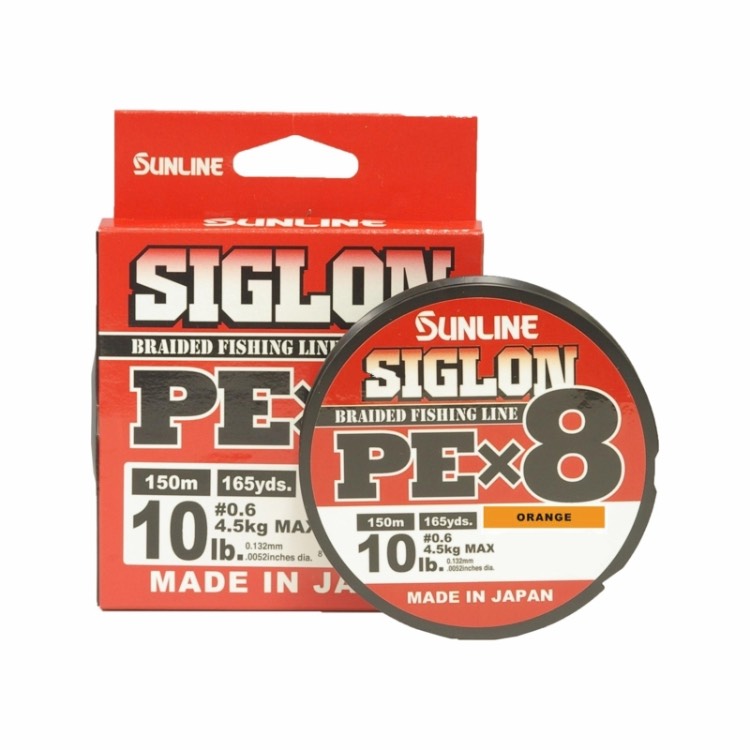
The thinness and cast-ability has been great. However a criticism of it would be that it frayed a little easily and subsequently prone to breaking easily if under pressure.
I would adjust the drag accordingly. Sometimes too much for a good set of the lure hooks on a strike. You learnt to adjust the drag after the strike.
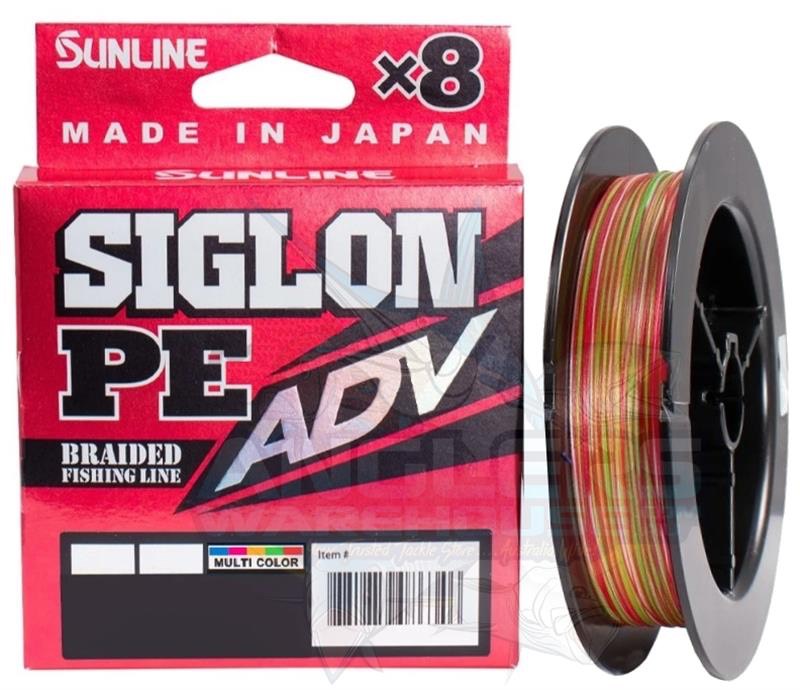
Today I tried the PEx8 - ADV version for the first time ,,,. Brilliant !!!
Smooth, abrasion resistant. I totally agree with their claim;
"deep resin technology. Increasing abrasion resistance 4 times, slickness and knot strength. It also repels water to improve casting distance cast after cast."
And available for a very similar price. Highly recommend it.
Cheers, Des.
-
On 30/12/2020 at 6:22 PM, Soobz said:
Looks really nice, and I really appreciate they give you a spare spool and cork + EVA handle knobs. Pretty pricey though as you say. The MGX is a fair bit cheaper, still really light, wonder what you're losing.
 I have them both
I have them both  No extra bits & spares with the MGX. But very little diff in their performance. Touch of weight you possibly wont feel.
No extra bits & spares with the MGX. But very little diff in their performance. Touch of weight you possibly wont feel.
Keep an eye out for a Sydney retailer on ebay who has them on special often. Reliable supplier as well.
Cheers, Des
-
On 30/12/2020 at 5:36 PM, Territory Lad said:
Couldn't agree more with this.
The Samaki - is it the V1 (cork butt) or V2 (skeleton reel seat)? V1 is a belter of a rod!!
Had not paid much attention to the butt. More concerned with the other end

Yes V1 with the cork butt
-
14 hours ago, keenfisho said:
That reel is beautiful Des
you not using the zodius rod anymore?
i have not fishing the flats that much since I got mine but I’m still not 100% sure on it
did you have problems pulling hooks when you used yours?
for a 3-6pound rod I do find it a bit stiff through the tip
Zodias is a good rod. Just better options for YFW. Take it out if Bream and Flathead are in a spot.
Yes it was pulling hooks. I have moved to 7" 6" ultra light rods for YFW.
Longer casts and most importantly more shock absorption when those big ones run hard in close. Rarely pull a hook now.
The 2 standard rods in my wading tub at present are:
Samaki Zing Xtreme SZX-762SFR-SPIN 7'6" 2pce Line 2-6lb Lure 1-7 gms
Abu Garcia Eradicator Real Finesse ERFS-76LT-TZ 7' 6" 2pce Line 0.6-3lb Lure 0.1gm-12gm (66gms)
Cheers Des
-
I have been using this for the last 12 months. No more R.S.I from lure casting for 8 hours !!!
ABU GARCIA MGX Revo 2 MGXtreme 20 Reel REVO2MGXTRSP20. A 2000 size reel only 159 gms.
https://abugarcia-fishing.com.au/product/revo-mgxtreme/
I have it balanced with an Abu Garcia Eradicator Real Finesse ERFS-76LT-TZ 7' 6" 2pce Line 0.6-3lb Lure 0.1gm-12gm
... only 66 gms
https://abugarcia-fishing.com.au/product/real-finesse/
It does stretch the budget a little.
Cheers, Des
- Yorky, Squid Inc. and Soobz
-
 3
3
-
@yellow door 1 5 years now and I still have to be very careful not too sharpen too much
-
Fool proof. Most often found in butcher shops and suppliers.
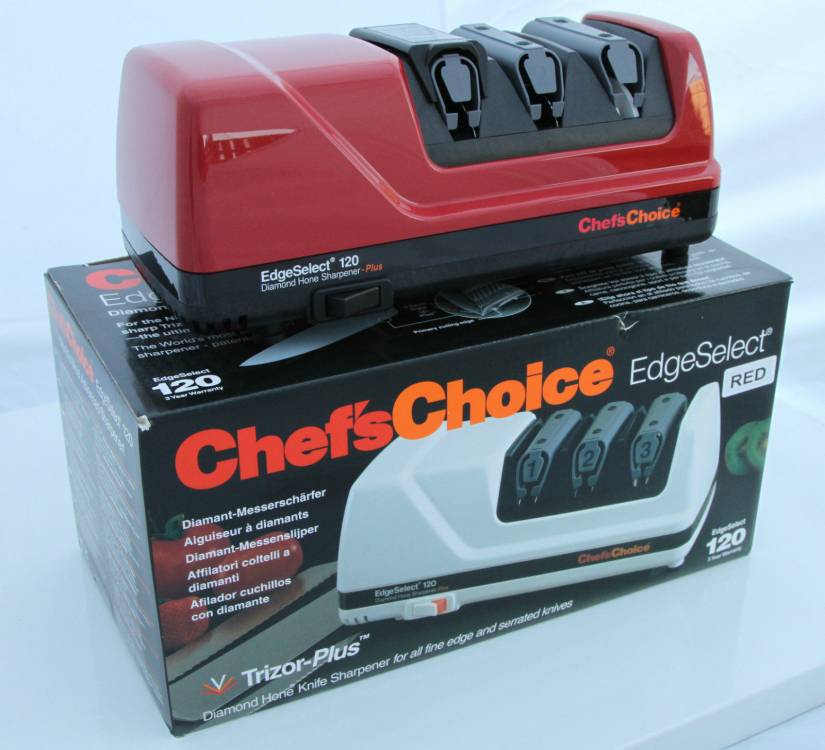
-
-
Can you go fishing?
Hi, I am struggling to find any info on boating can I still take my boat out to catch fish to eat if I go by myself??
-Sefwhat about the isolation of fishing off beaches and alone along deserted waterways...that's the only way I"m going to be able to stay sane during this developing crisis.
-harvesIf you're fishing alone or with one other person and limit your contact with other people during the outing, you are free to do so.Sophie Meixner about an hour ago(Updated: about an hour ago) -
about 2 hours ago(Updated: about 2 hour
ABC News Blog, explains the application of the new rules.Click on the link below to see the whole article/blog, questions & answers -
-
I have just seen this post. Here are some of my experiences and current thinking.
These days I always use a clip.
I wont touch the Decoy round snaps or V snaps as I have lost too many good fish and lures due to them opening up. On some occasions quite possibly my fault as they are so bloody hard to snap into place properly.
These are the snaps I use these days. They are so easy & quick to use.
1) Norman Lure Clips. Ever reliable
2) Decoy Spiral Snaps ... which I have only just started using. Time will tell.
- Mustad Fastach clip, Is an easy to use clip, but I have found with a vigorously worked floating stick baits the lure can work loose and off the clip.
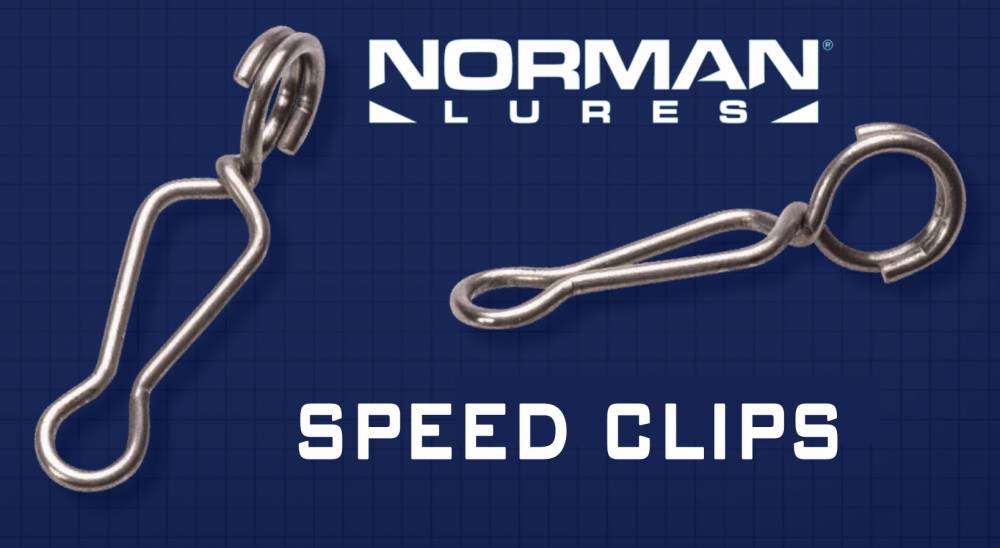
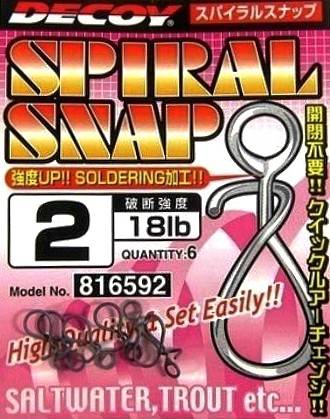
So I don't tie direct to the lure. Repetitive tying will soon shorten your leader. These days my leader is fairly short. Around 18" to 24" as I am using ultra light rods with micro guides. Those guides are very knot intolerant and I am not good at tying the slimmest FG knot. So the knot does not enter the guides at all. The sensitive top end of a quality ultra light rod is a good shock absorber and you don't need to rely as much on the leader which can now be shorter.
Too much is made of the effect of the clip on the lure action. Poppers are potentially the most affected. A high rod position with an upward wrist action will get it popping right. A sensitive quality ultra light rods will allow you to impart a greater variety of actions to your lure.
This is visual fishing with surface lures. So change and adjust your rod position, wrist action & retrieve action to give you your desired movement. You always control and work the lure rather than the lure control you and you simply wind it back !
Apart from an ultra light rod with a well balanced reel, the other link in the chain is to use a very sensitive braid and leader. I find Sunline Siglon braid and Sunline Float deliver your rod and wrist action quickly and directly to your lure. Easier to impart your desired action.
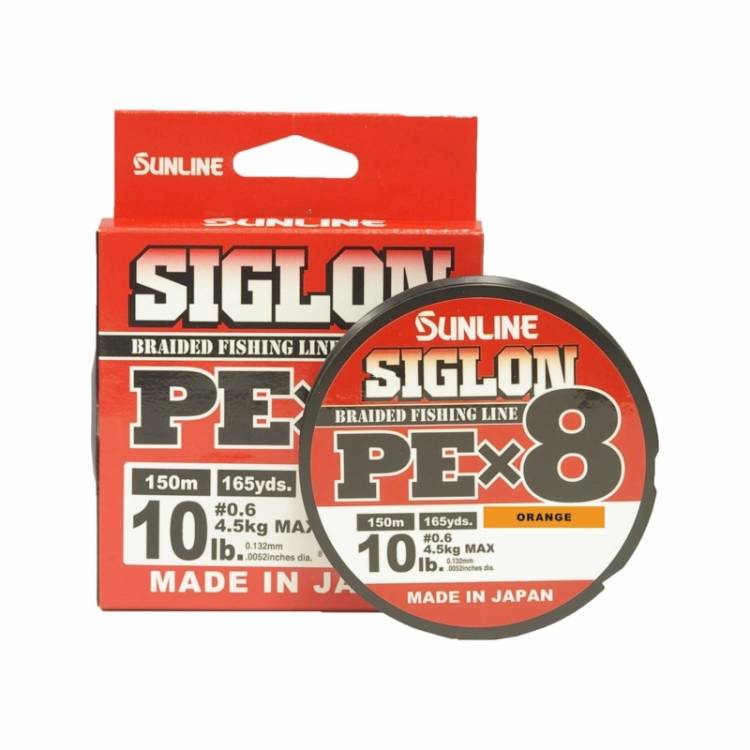
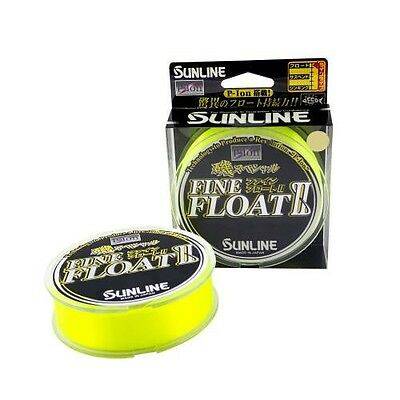
Clips make lure fishing soooo easy. But you may have to consider the rest of your gear for them to be effective. Good luck.
Cheers, Des
-
Work your way around spot to spot in the Gulf on here to get a picture of where and how the tides move
http://www.bom.gov.au/australia/tides/#!/sa-second-valley
-
13 hours ago, Mjadeb1984 said:
Has anybody used fish sauce. It’s water soluble so goes down through the water column and works quite well. I’ve had pretty good luck using it.
That makes a lot of sense! I will try that.
Oil floats. Great for Garfish. But for other fish on the bottom it needs to be soaked into pellets that sink and release it from the bottom.
Any particular brand you use? Any bulk buys?
I am looking to attract fish into an are before throwing lures at them

Cheers, Des



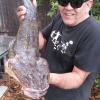
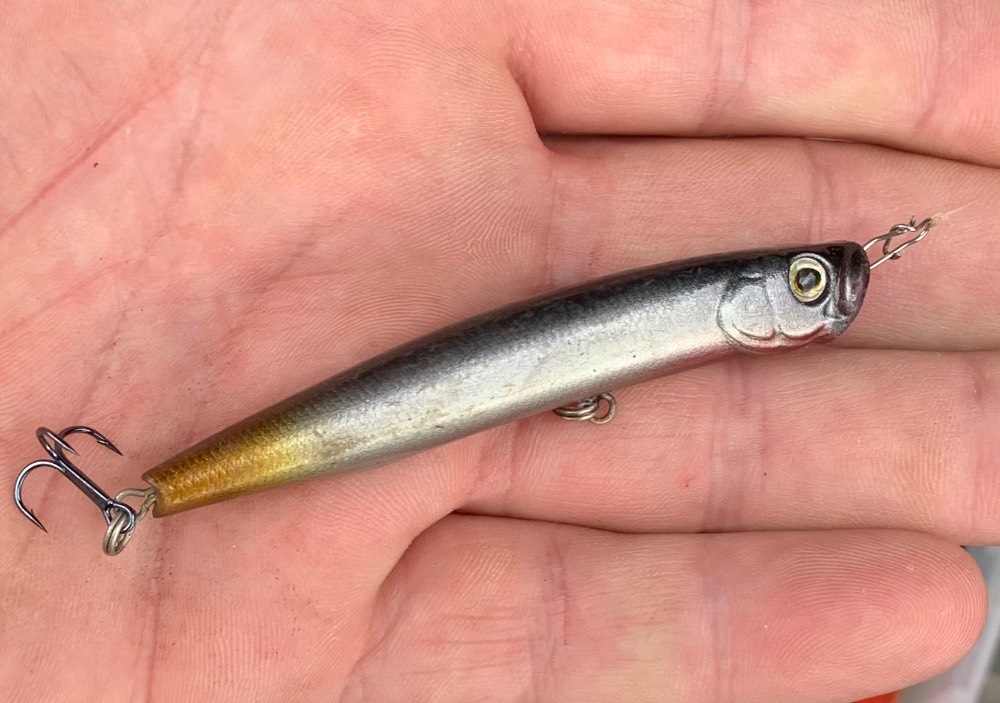


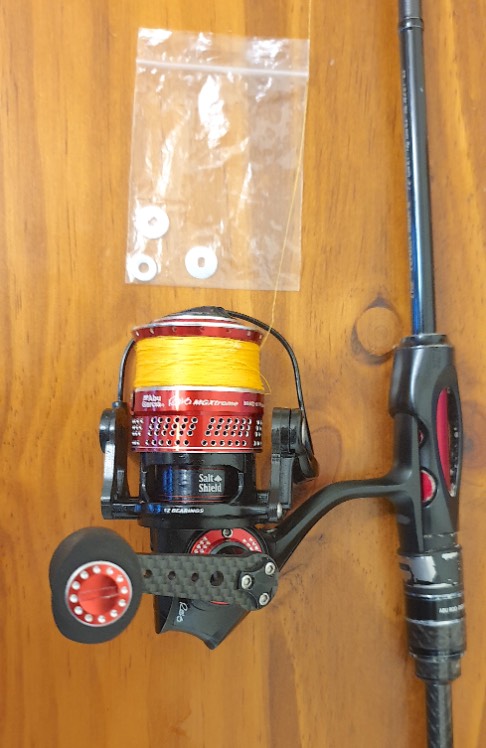
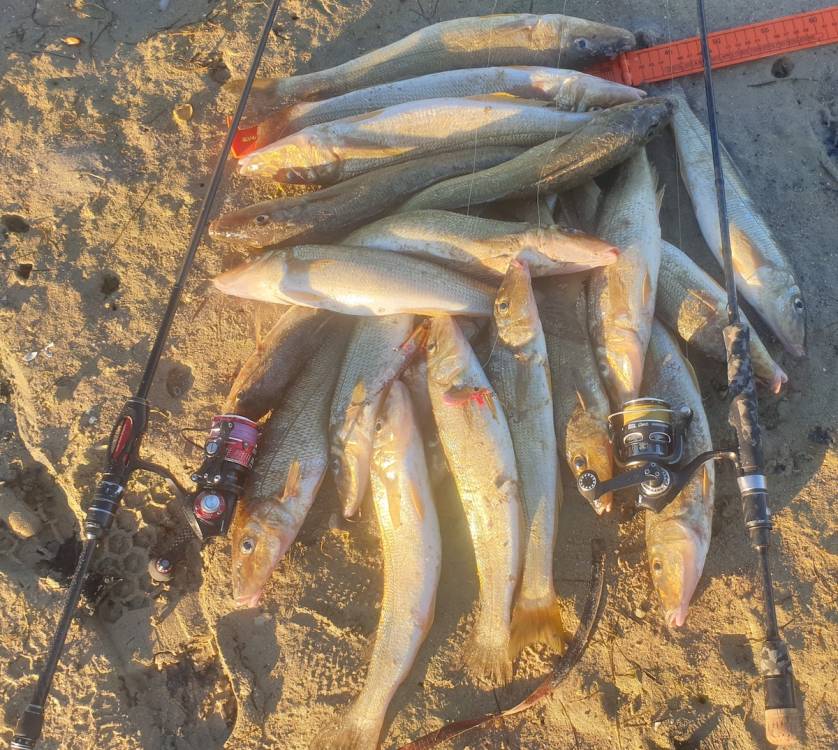
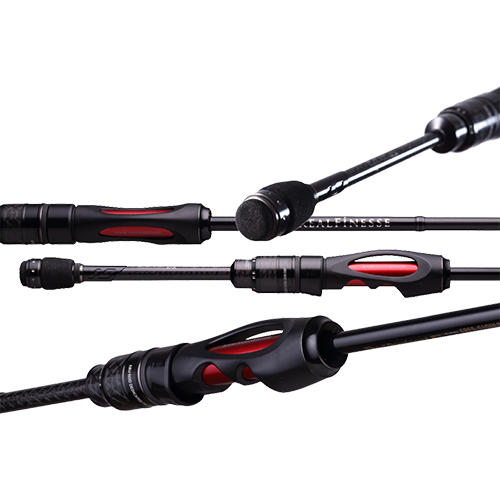
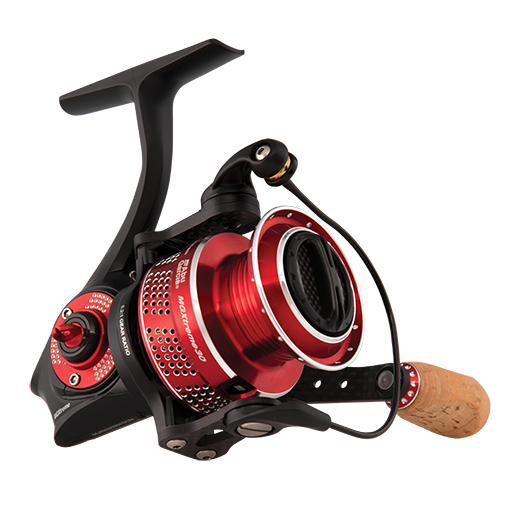
Southern Garfish - Best Baits. Can You Match the Hatch?
in Garfish
Posted
Good info @projoe
Look forward to your flyfishing Gar post